Did you know where the most famous television programs and documentaries about lemurs were filmed? We learned the answer after we got to that very place. It’s the Berenty Reserve in southernmost Madagascar.
Day 3 on Madagascar: Berenty Private Reserve
This small private reserve is the place where research and lots of fieldwork was conducted on lemurs. They are truly the main attraction here.
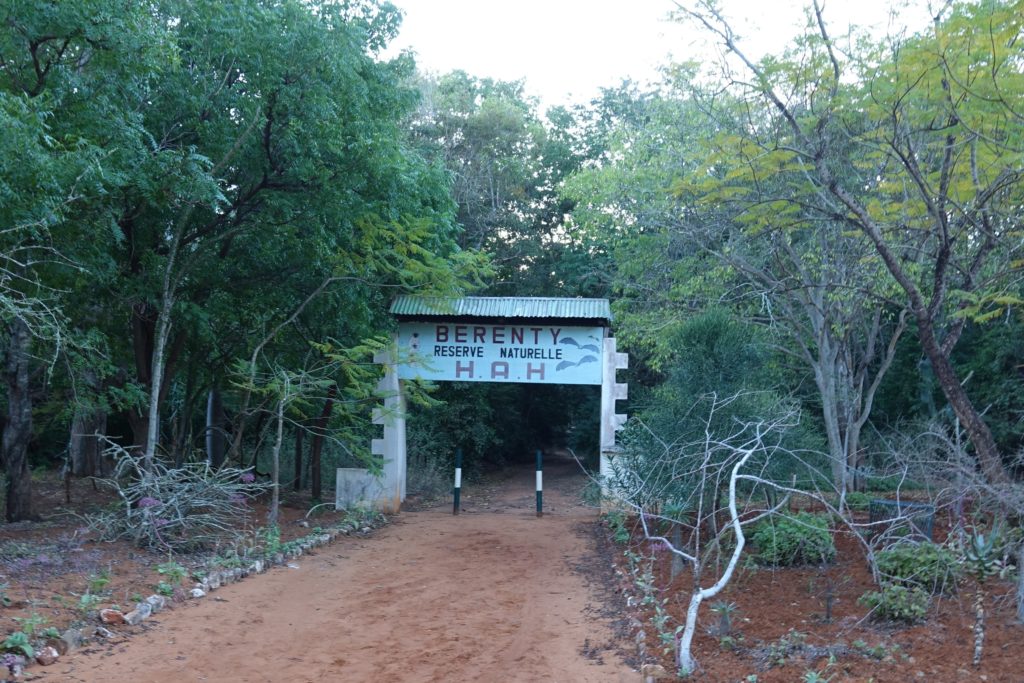 Our day began with seeing a family of Verreaux’s sifakas close to the main building, which houses the kitchen and the restaurant. They were sitting on the branches of a tree, warming themselves in the morning sun. One of them, a mother lemur, was holding her baby in her “lap.”
Our day began with seeing a family of Verreaux’s sifakas close to the main building, which houses the kitchen and the restaurant. They were sitting on the branches of a tree, warming themselves in the morning sun. One of them, a mother lemur, was holding her baby in her “lap.”
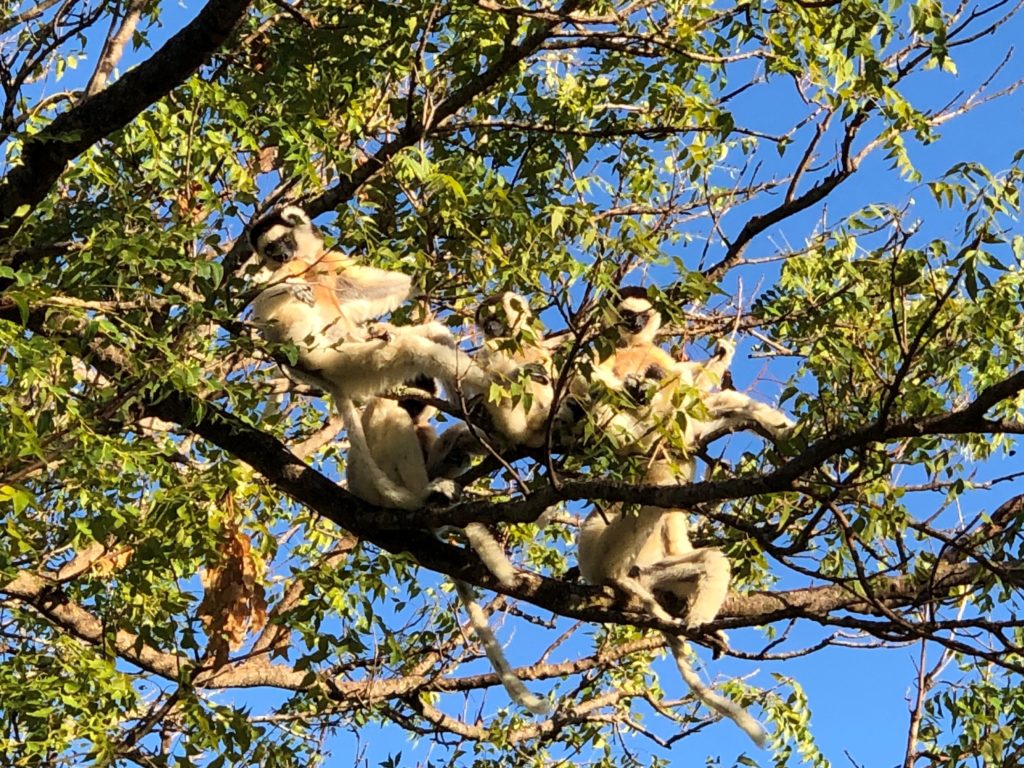
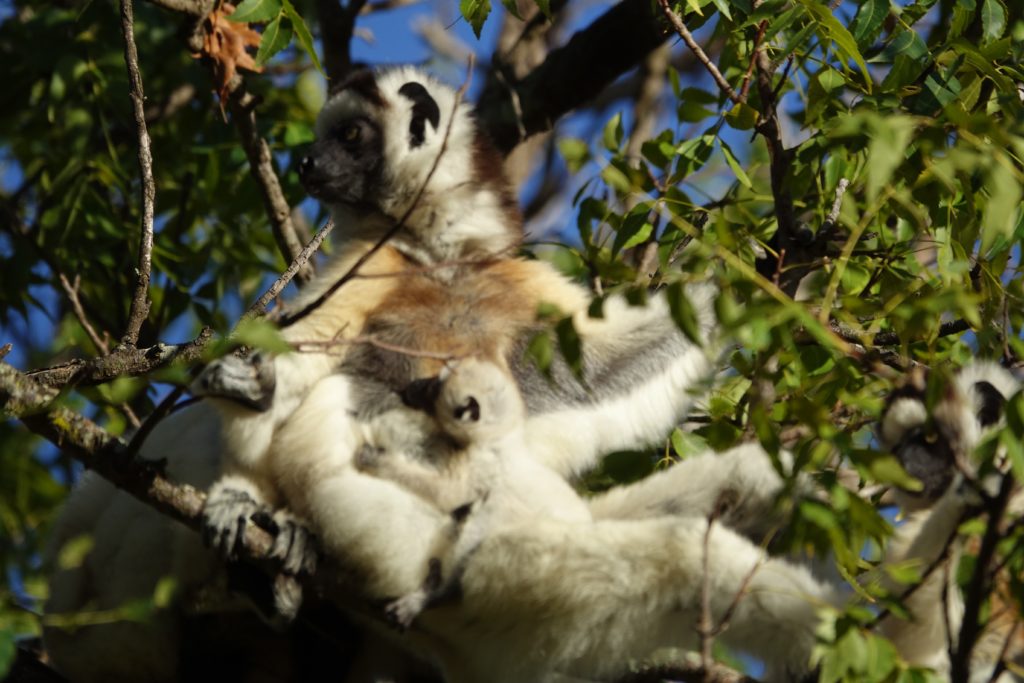
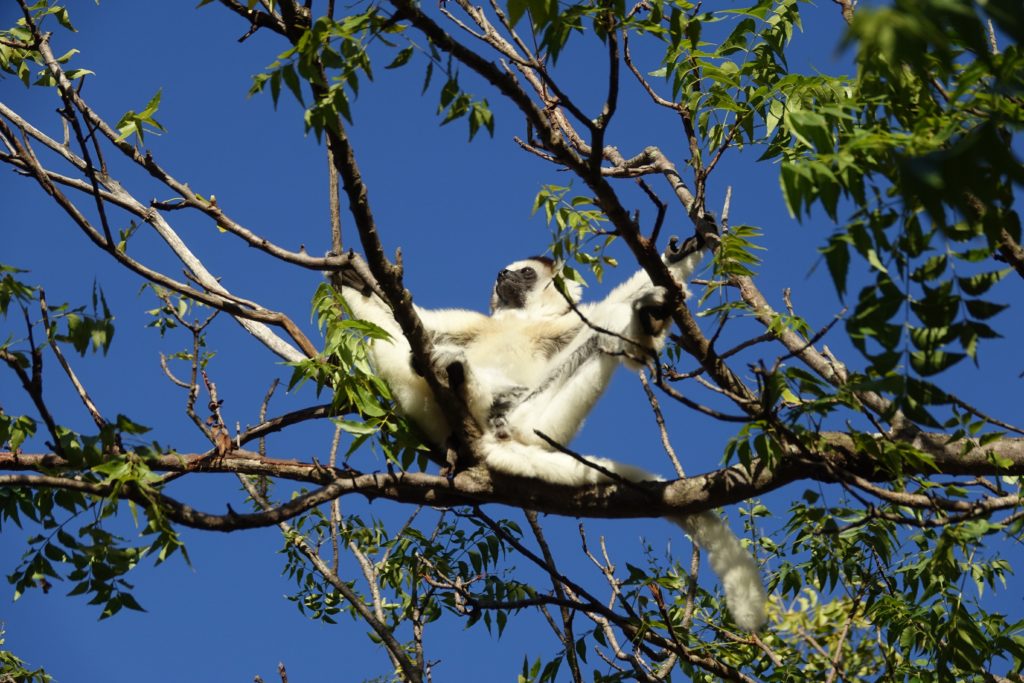 Suddenly, we witnessed the famous “dance” of the sifakas across the dusty road, and saw others jumping from one branch to the next, from one tree to the next, often many meters away, or hanging from the branches like acrobats. The red-fronted brown lemur was quite quick and liked to chase the others.
Suddenly, we witnessed the famous “dance” of the sifakas across the dusty road, and saw others jumping from one branch to the next, from one tree to the next, often many meters away, or hanging from the branches like acrobats. The red-fronted brown lemur was quite quick and liked to chase the others.


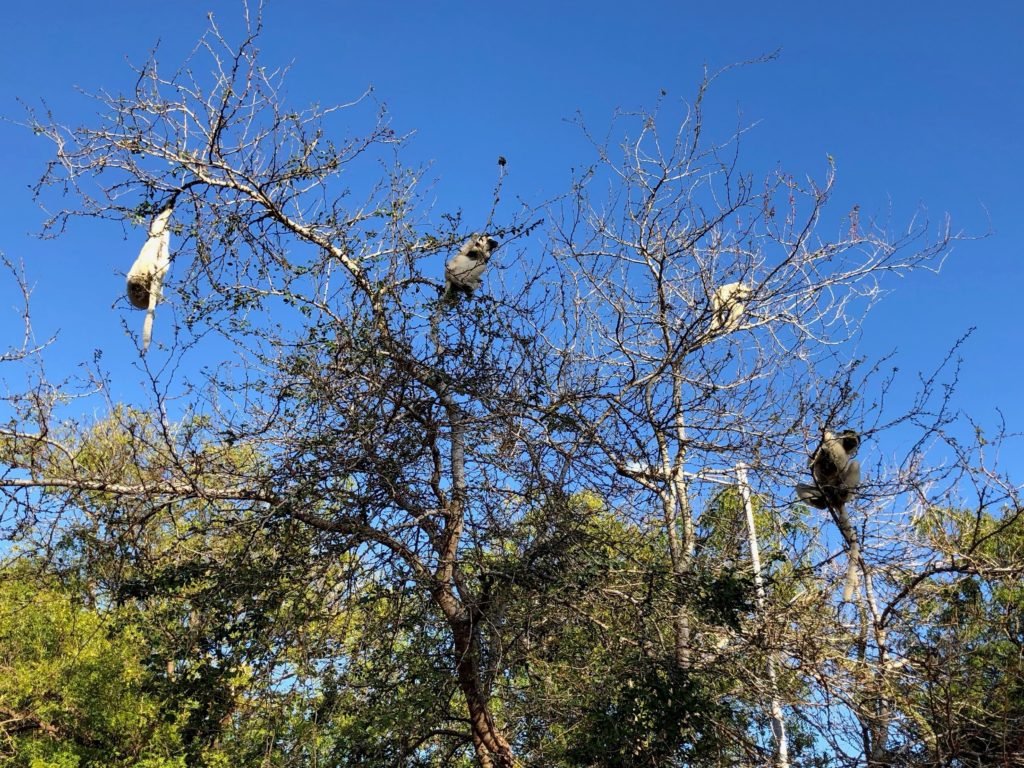
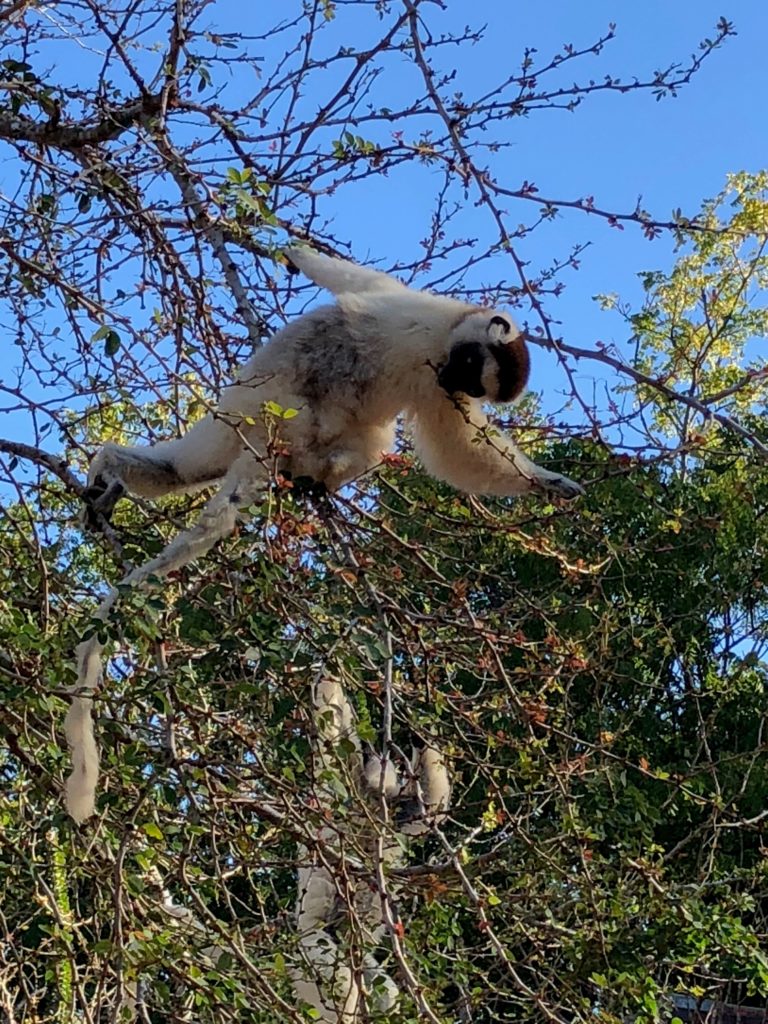
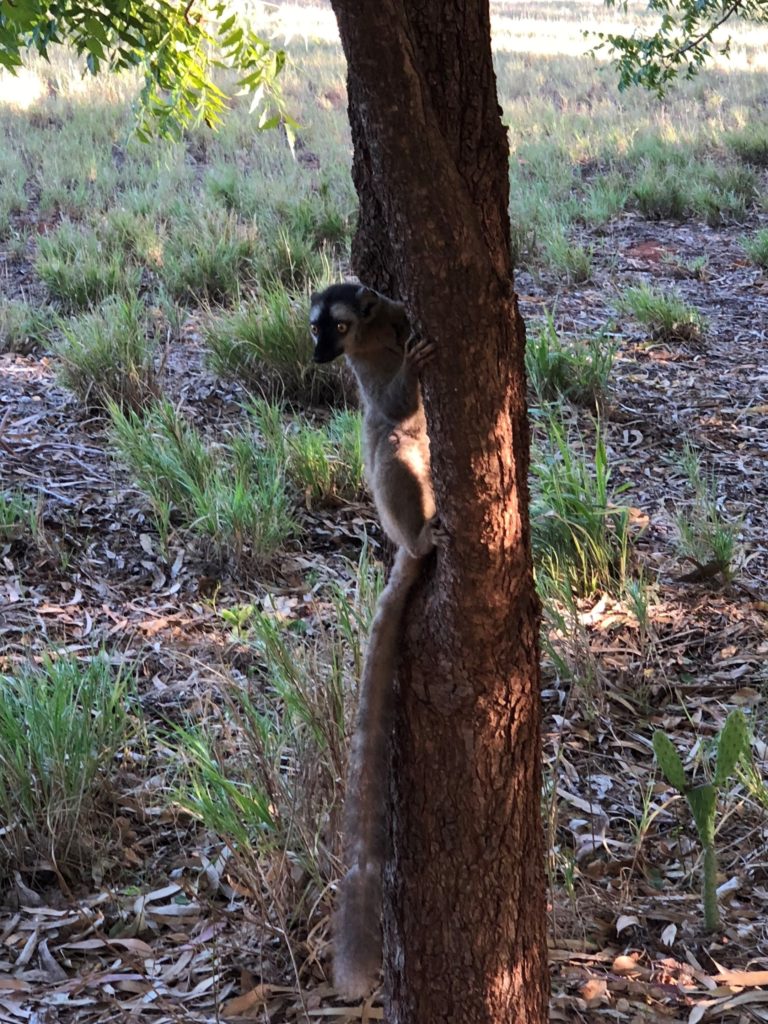 After walking away from the beautiful sifakas, we met a group of ring-tailed lemurs, which were trying to find the best spot for their morning warm up.
After walking away from the beautiful sifakas, we met a group of ring-tailed lemurs, which were trying to find the best spot for their morning warm up.
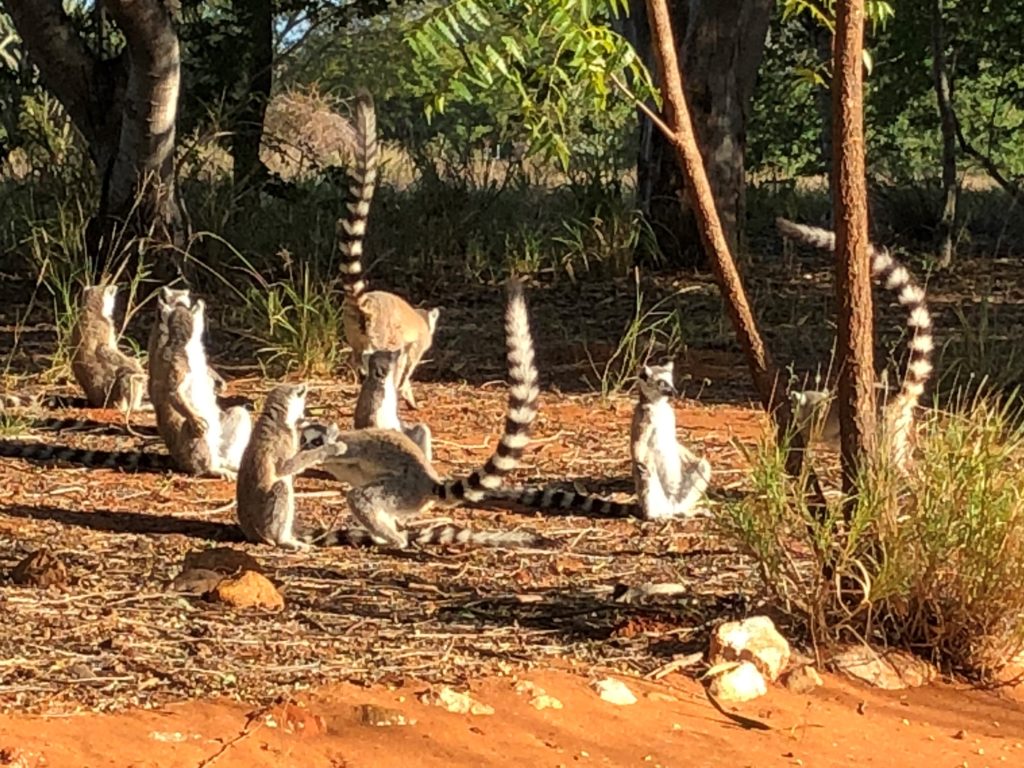
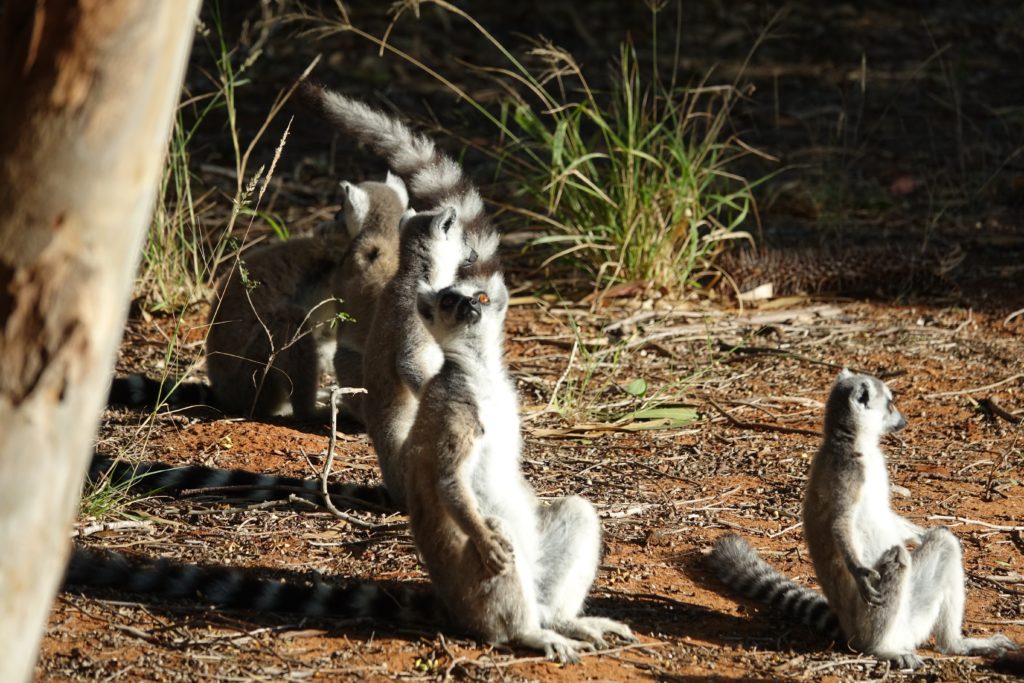
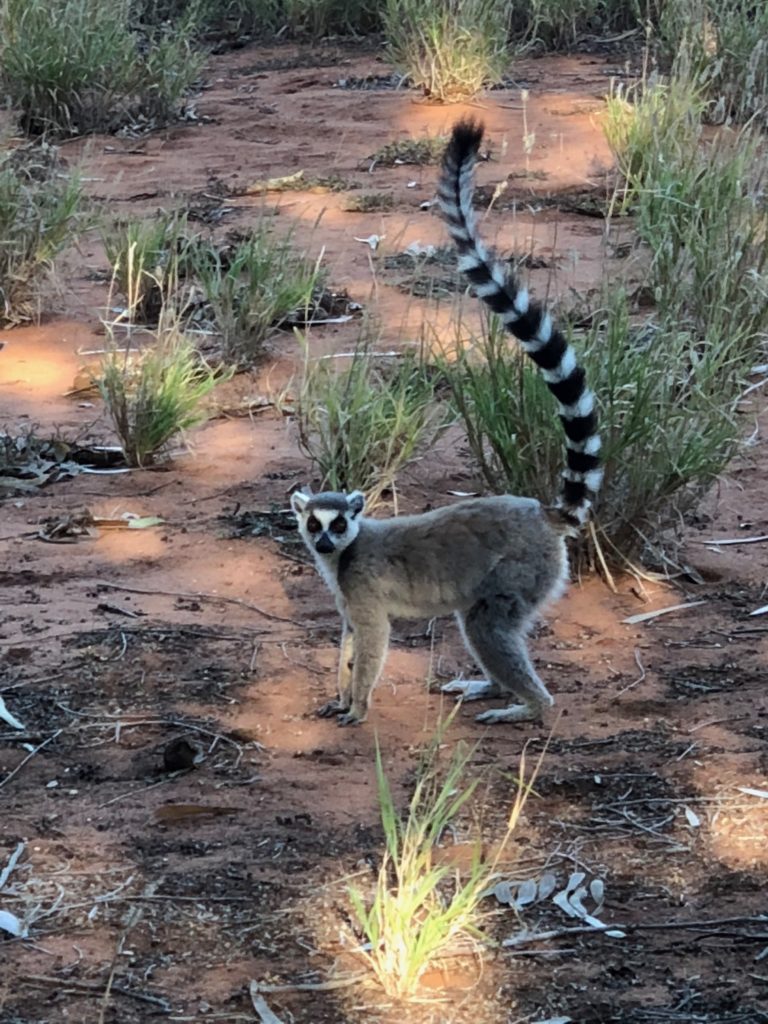
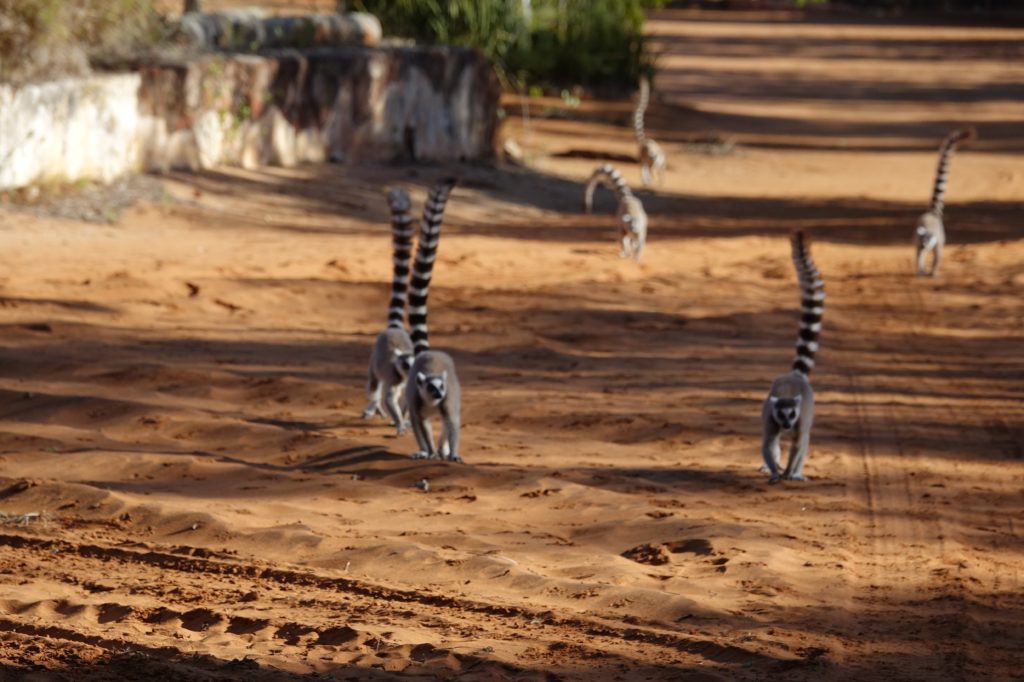 Throughout the day, we continued exploring this Berenty. It’s also home to the endangered radiated and spider tortoises, and also the big-headed turtle (which our guide, Jean Phillippe picked up for us to see from close). A Nile crocodile safely inside an enclosure reminded us that they live in the nearby river.
Throughout the day, we continued exploring this Berenty. It’s also home to the endangered radiated and spider tortoises, and also the big-headed turtle (which our guide, Jean Phillippe picked up for us to see from close). A Nile crocodile safely inside an enclosure reminded us that they live in the nearby river.
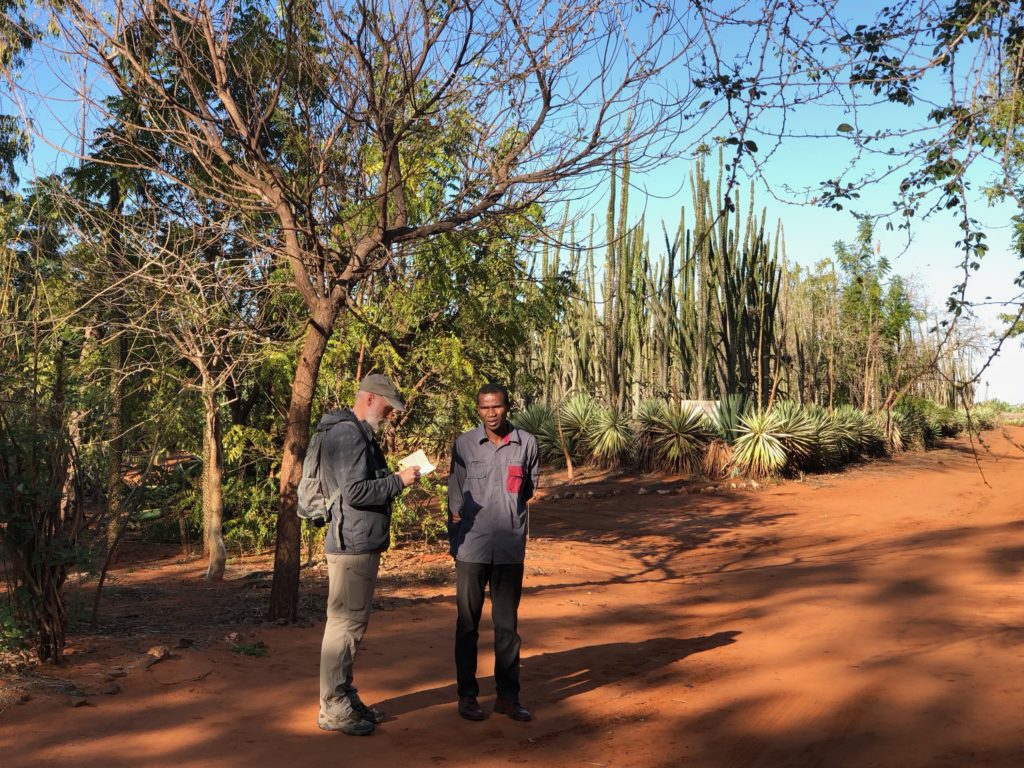
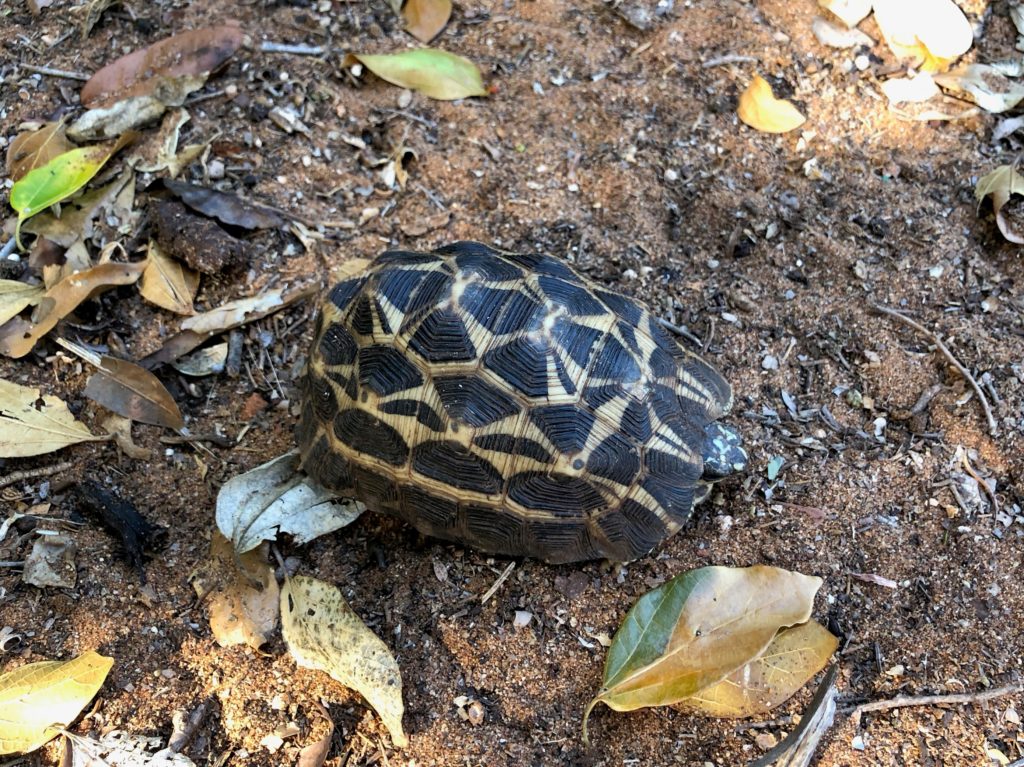
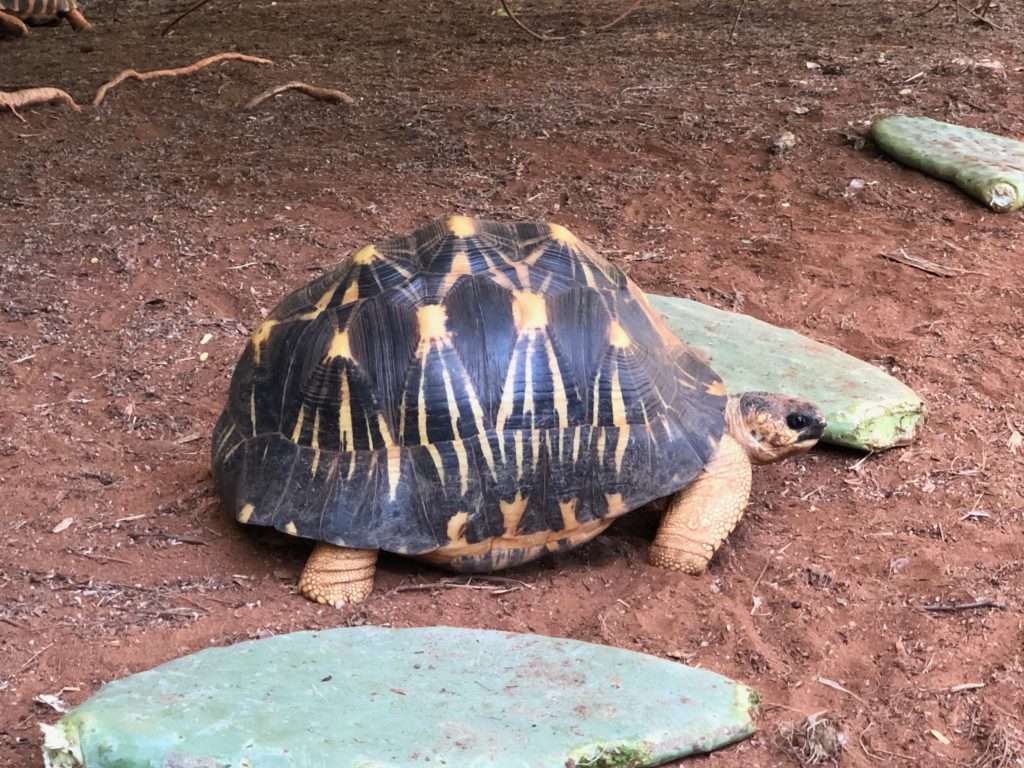
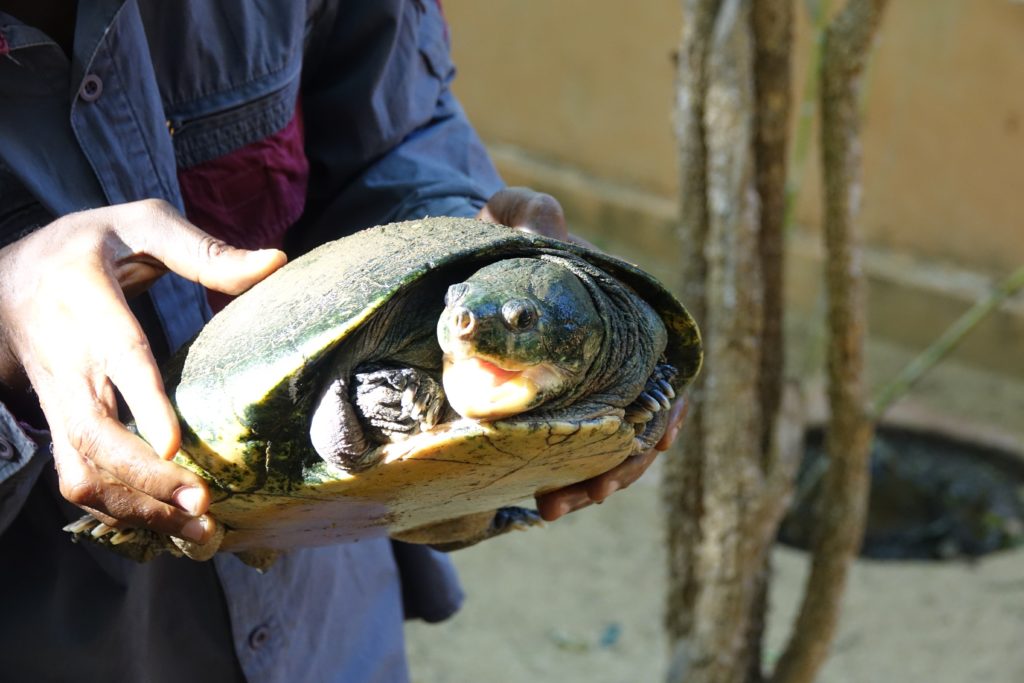
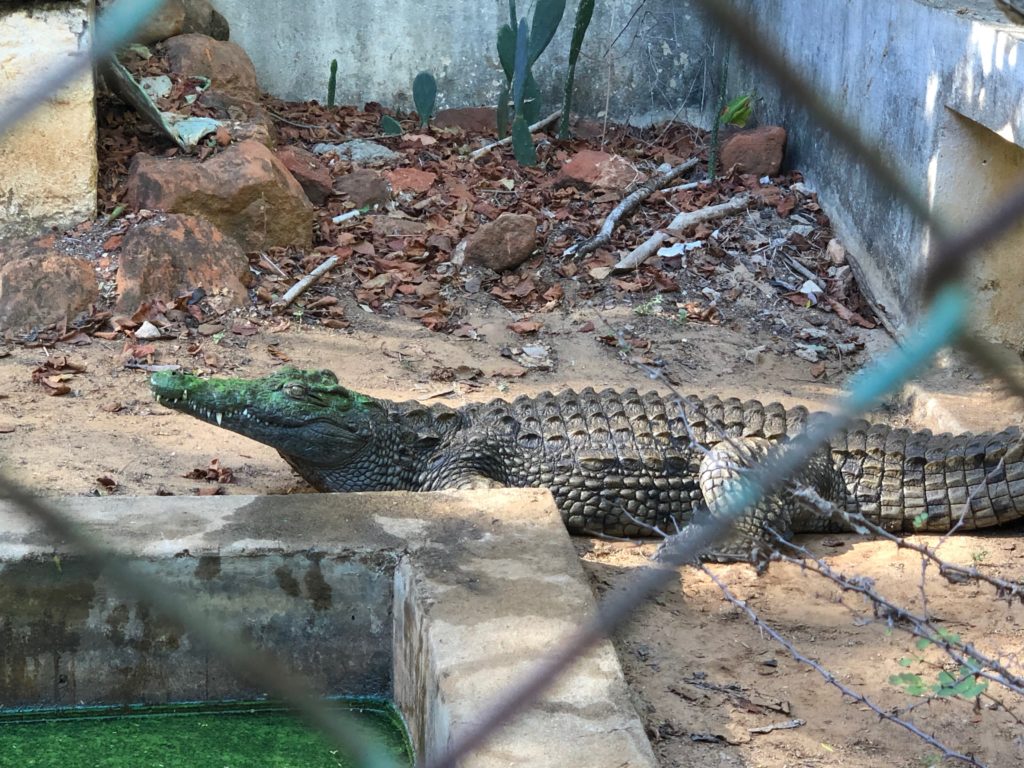 A vast array of endemic plants, shrubs and trees that are typical to this region, were everywhere around us. The lemurs evolved browsing the leaves of many of the trees, including the tamarind tree. Some other trees are introduced, like eucalyptus and pine.
A vast array of endemic plants, shrubs and trees that are typical to this region, were everywhere around us. The lemurs evolved browsing the leaves of many of the trees, including the tamarind tree. Some other trees are introduced, like eucalyptus and pine.

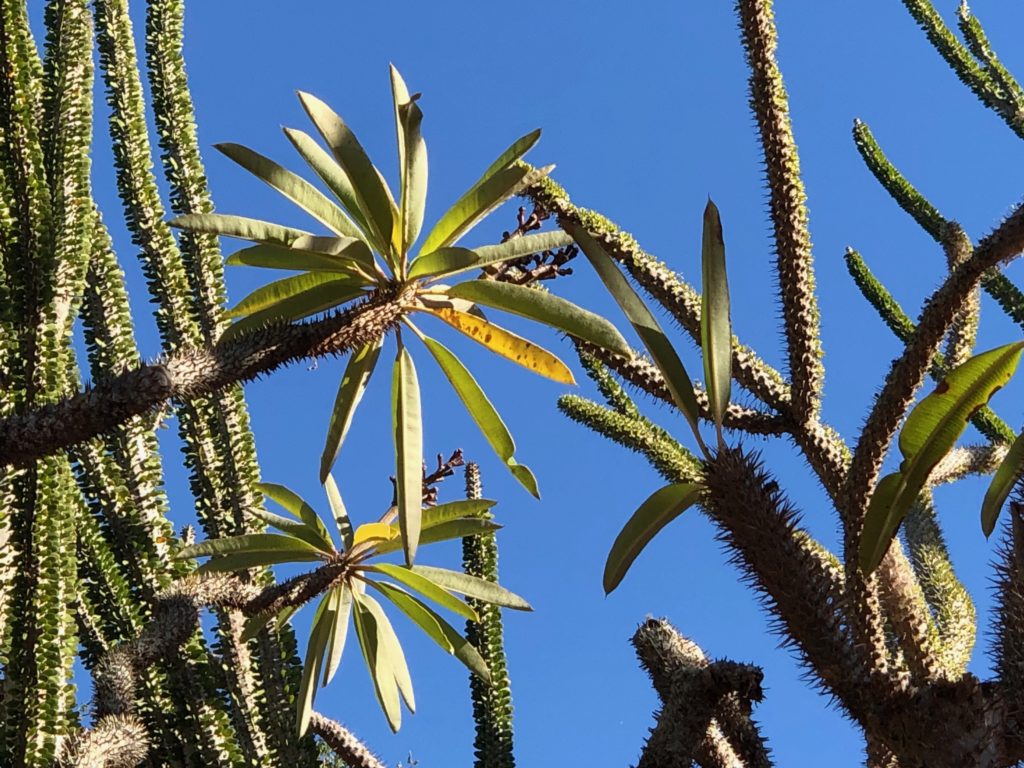
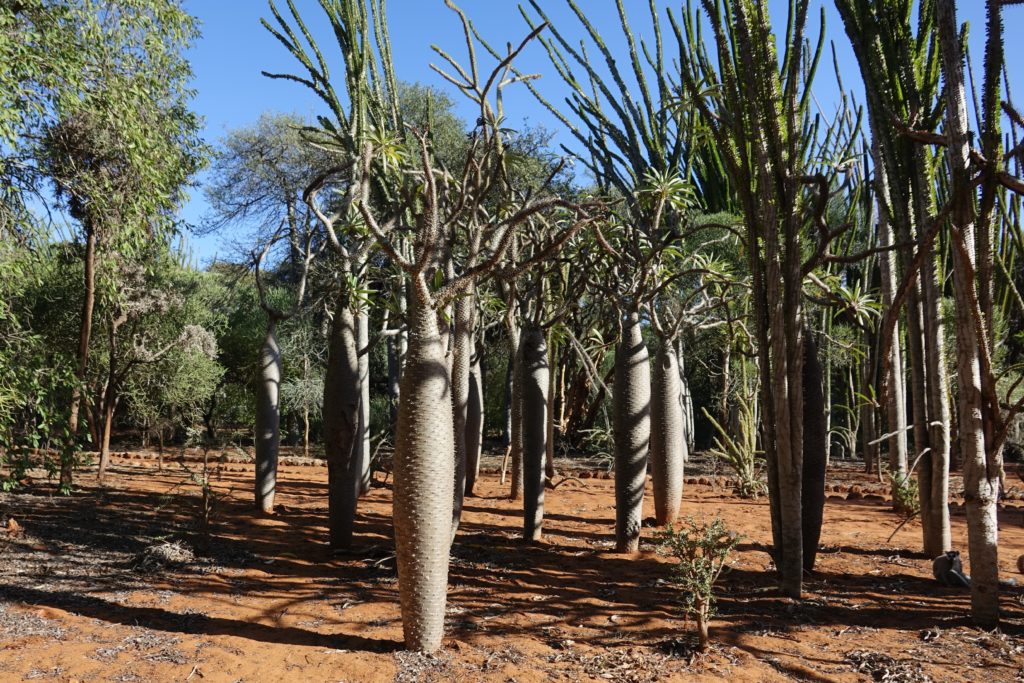
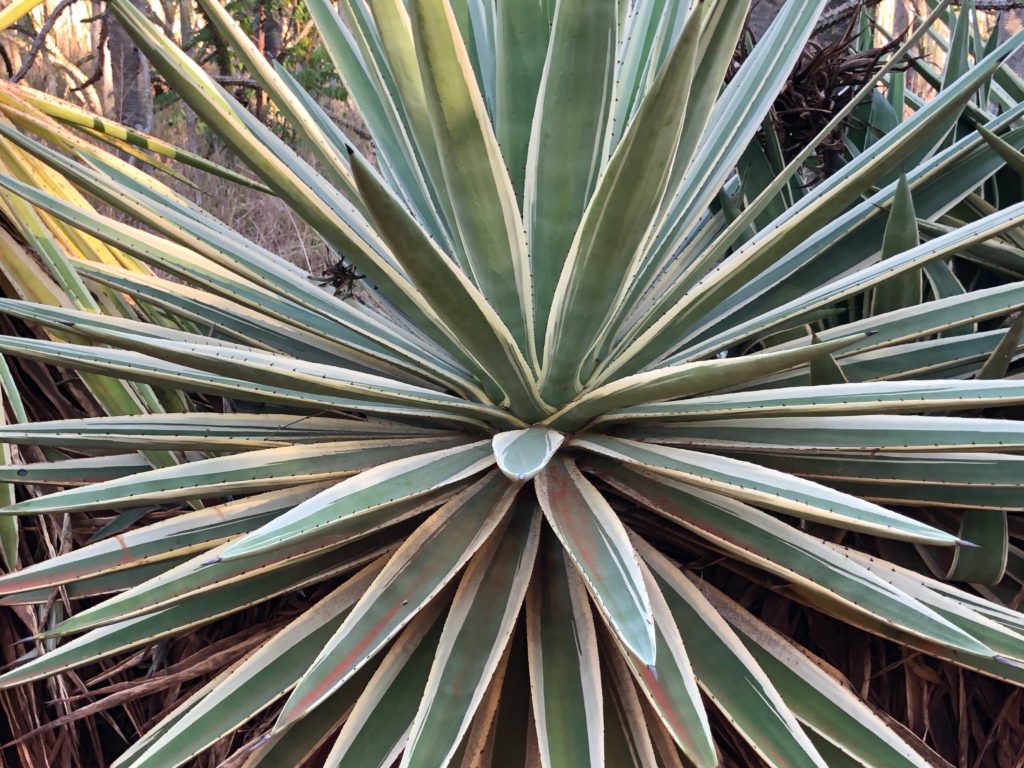
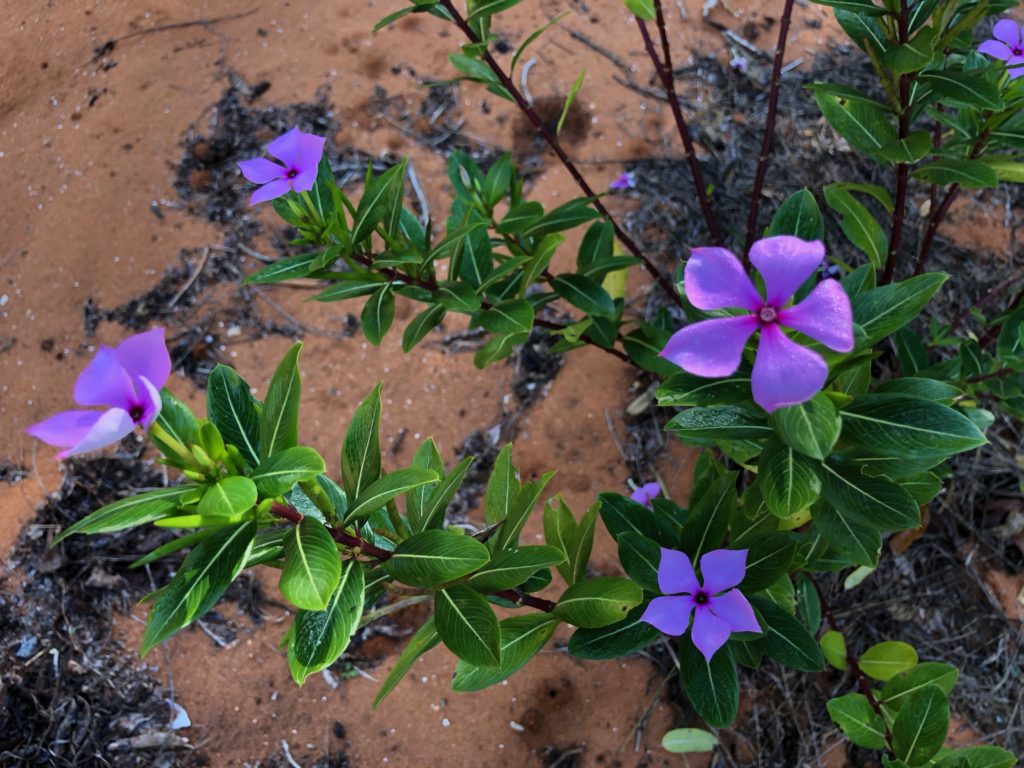
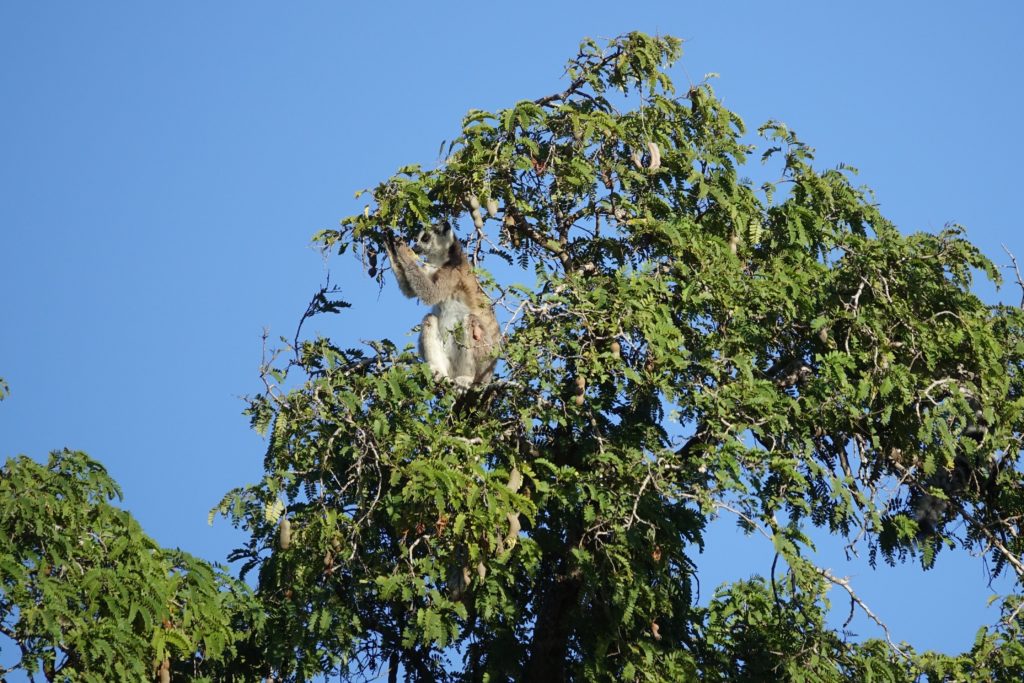 For the rest of the morning, we took a walk on the many trails in the gallery forest full of trees that exist only here. We didn’t see many birds but saw the Madagascar fruit bats and more lemurs. We didn’t notice the chameleon first – it was so well camouflaged on a branch.
For the rest of the morning, we took a walk on the many trails in the gallery forest full of trees that exist only here. We didn’t see many birds but saw the Madagascar fruit bats and more lemurs. We didn’t notice the chameleon first – it was so well camouflaged on a branch.
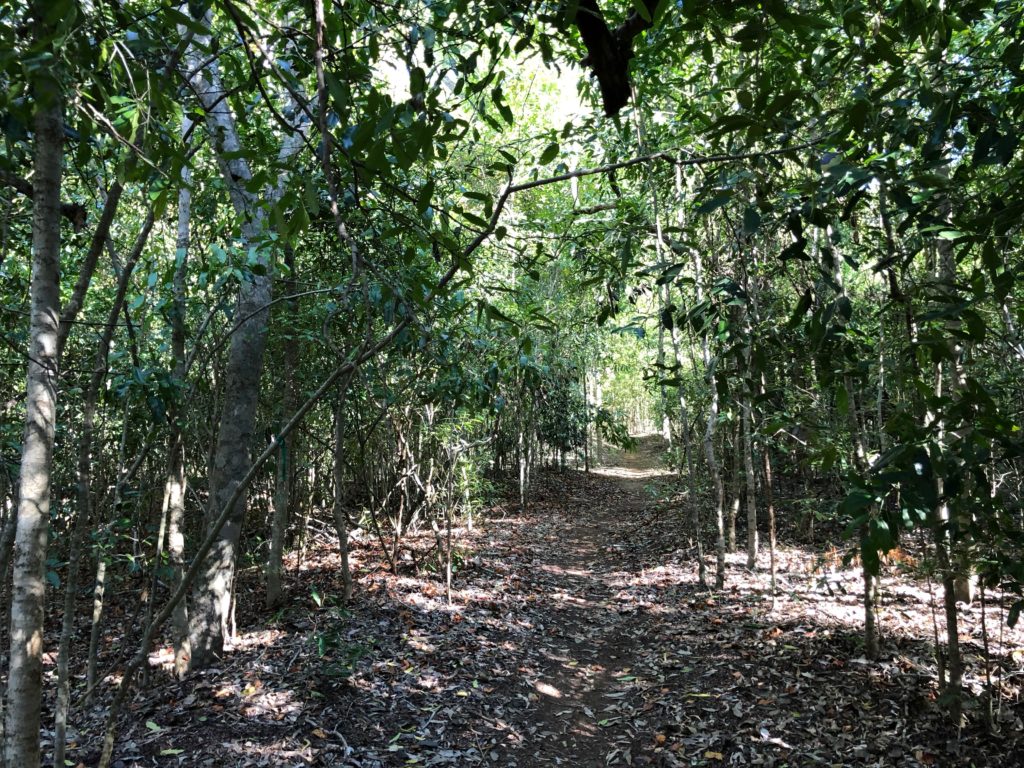
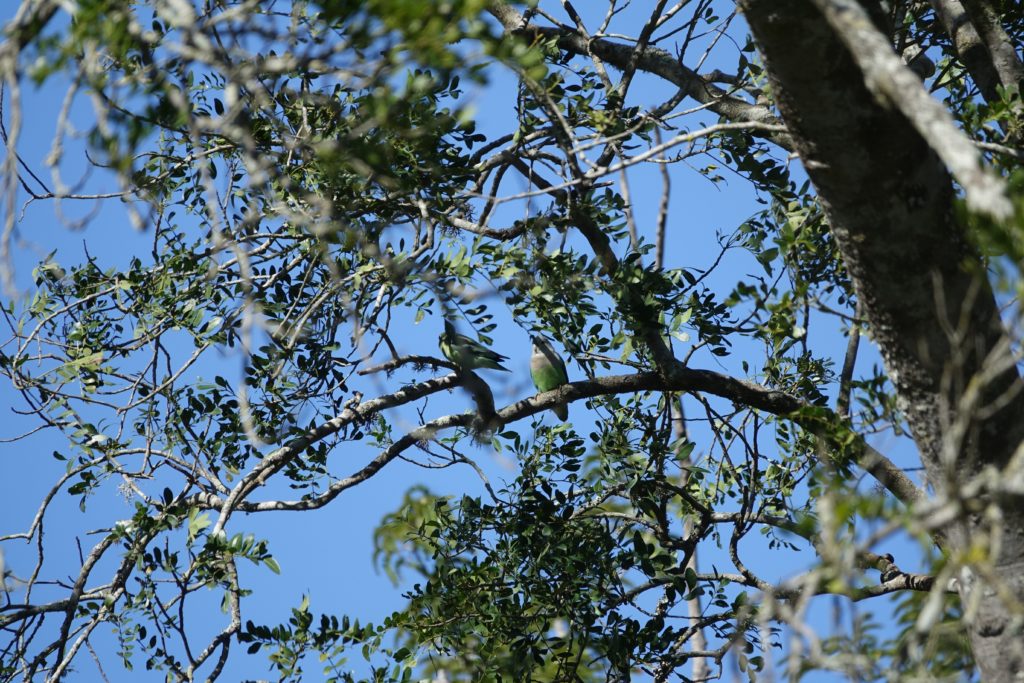
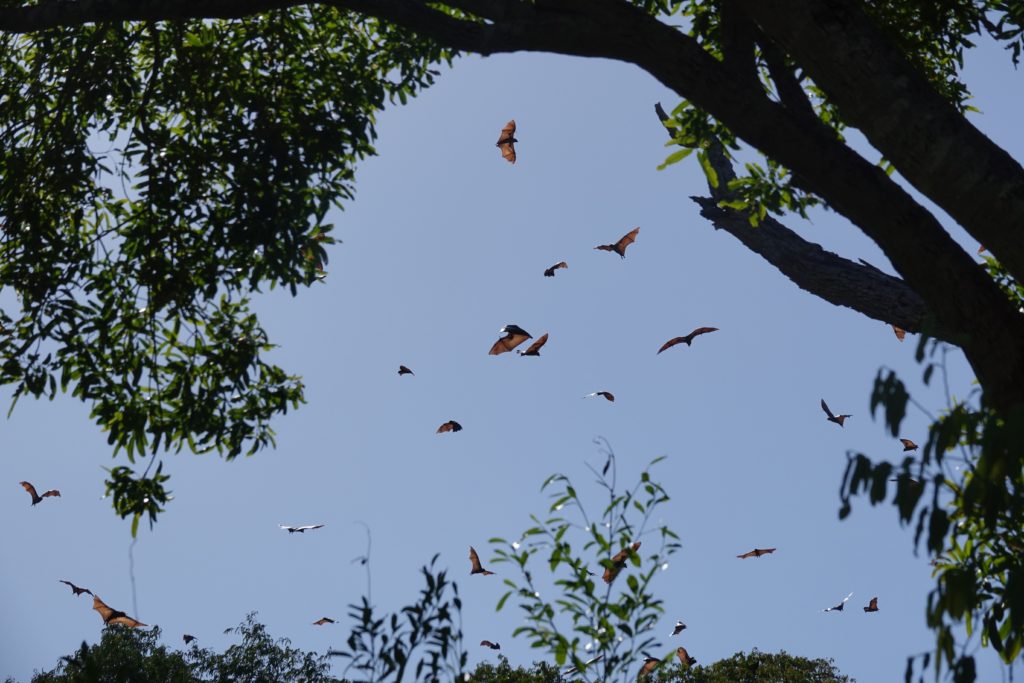
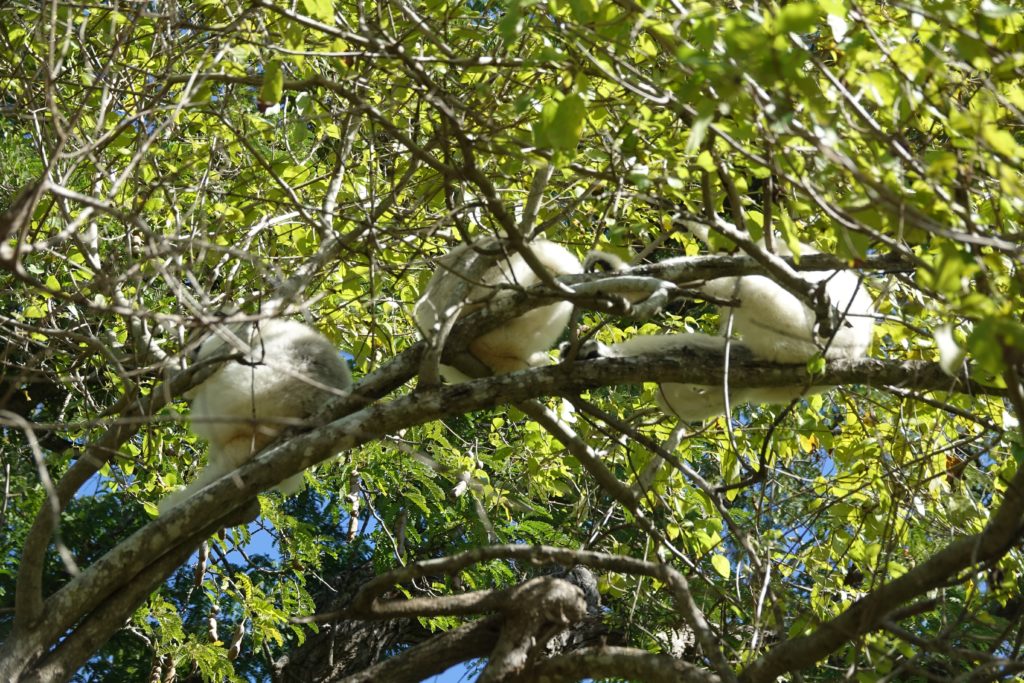
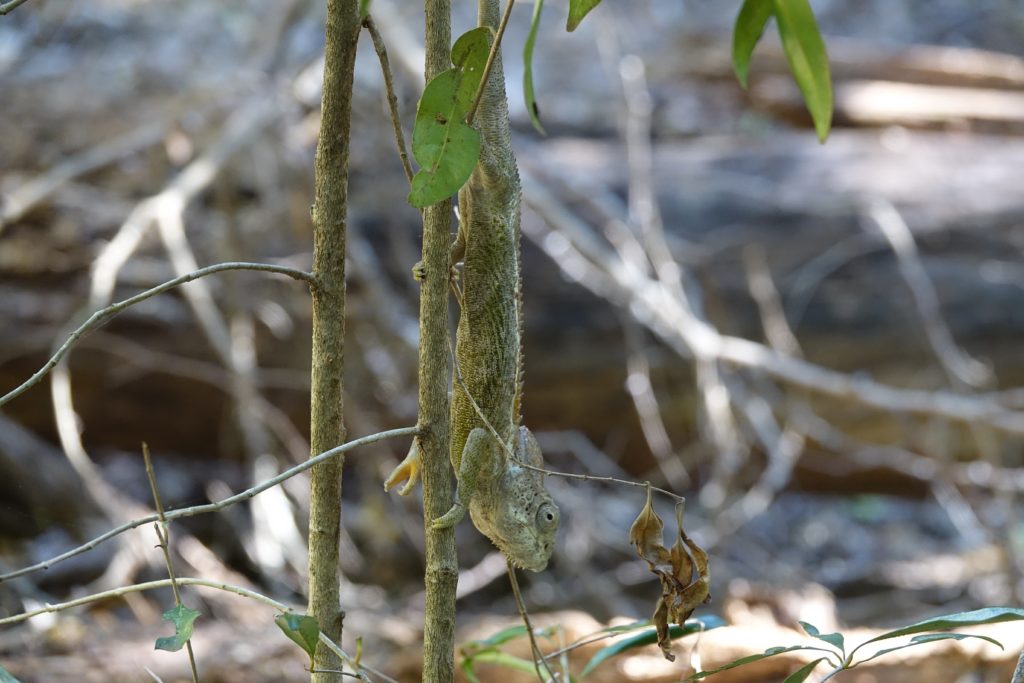
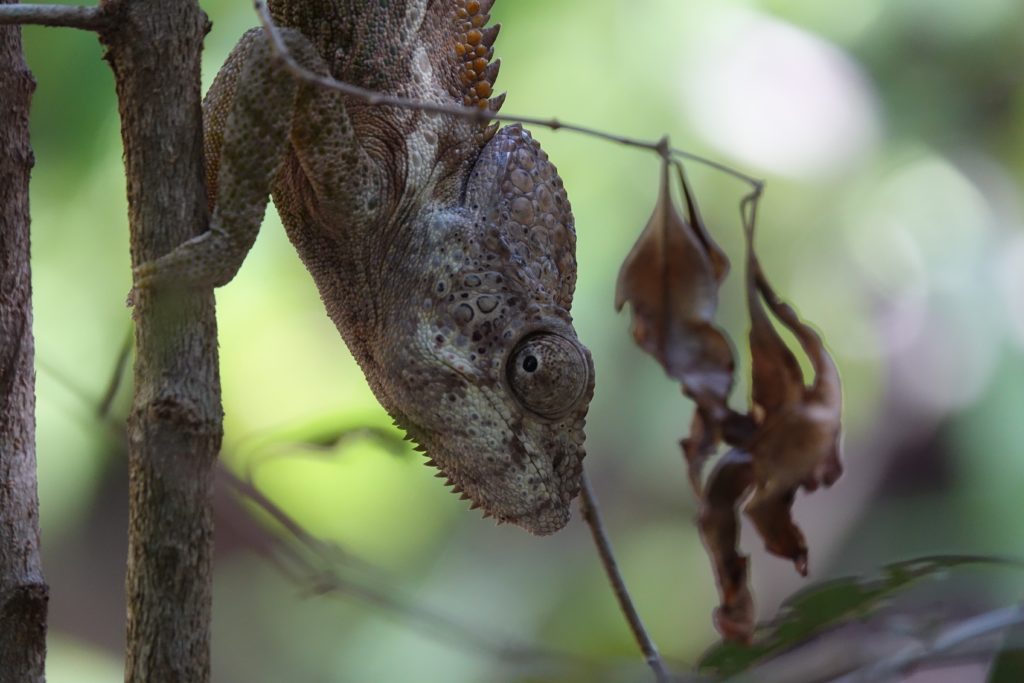 We walked by a small tribal village by the Mandrare River and met curious children there.
We walked by a small tribal village by the Mandrare River and met curious children there.
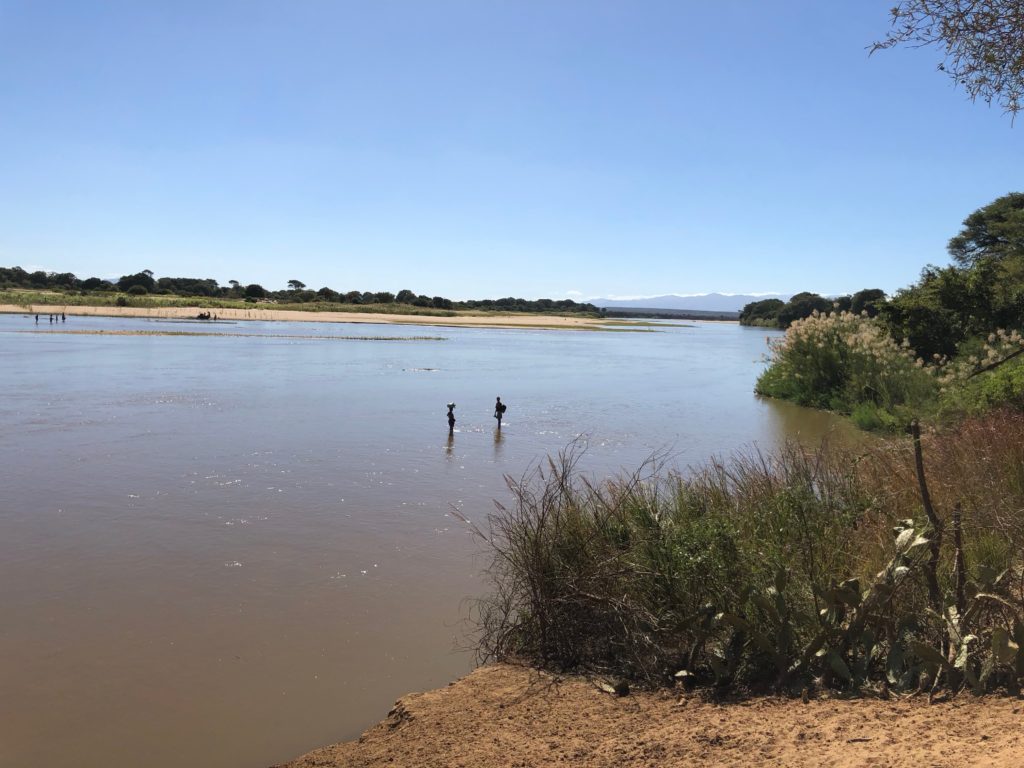
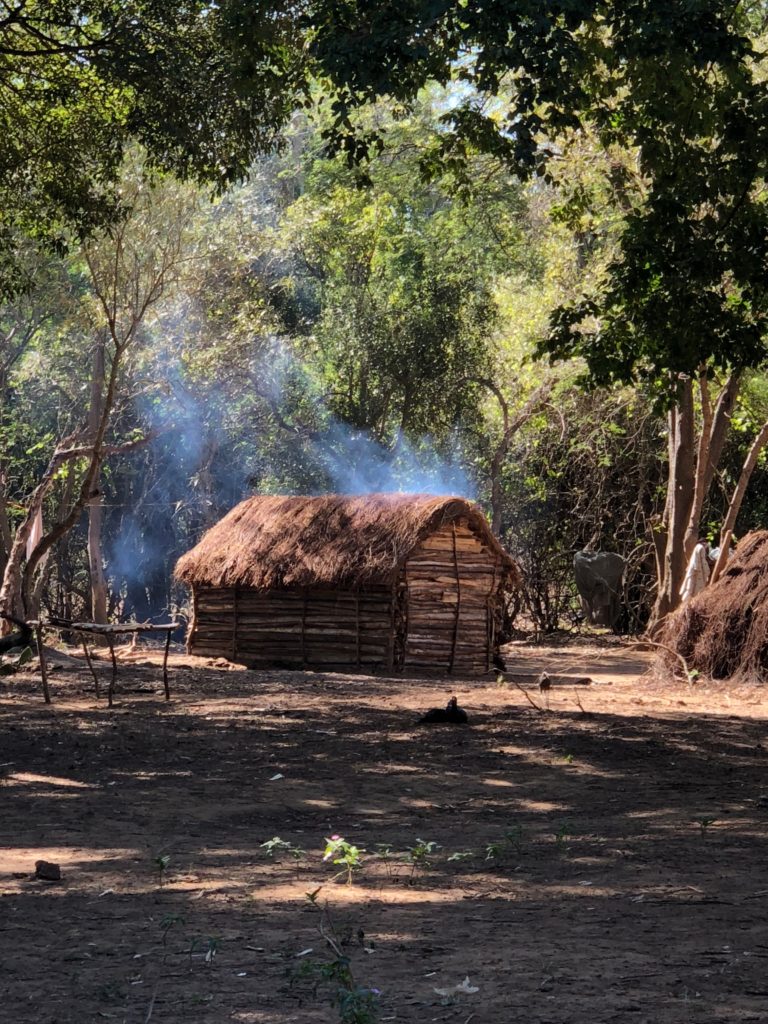
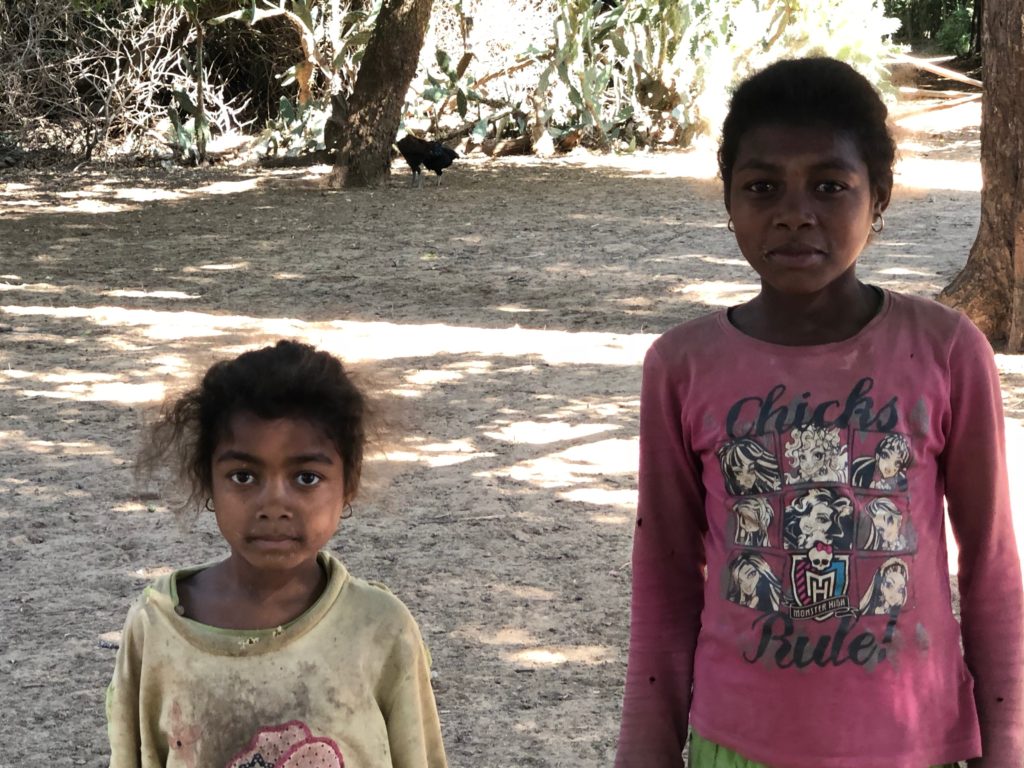 By the time we returned from our walk for lunch, a group of ring-tailed lemurs found the sunshine on our bungalow’s porch. We almost couldn’t get to the door. It was exciting and fun to have them so close to us!
By the time we returned from our walk for lunch, a group of ring-tailed lemurs found the sunshine on our bungalow’s porch. We almost couldn’t get to the door. It was exciting and fun to have them so close to us!
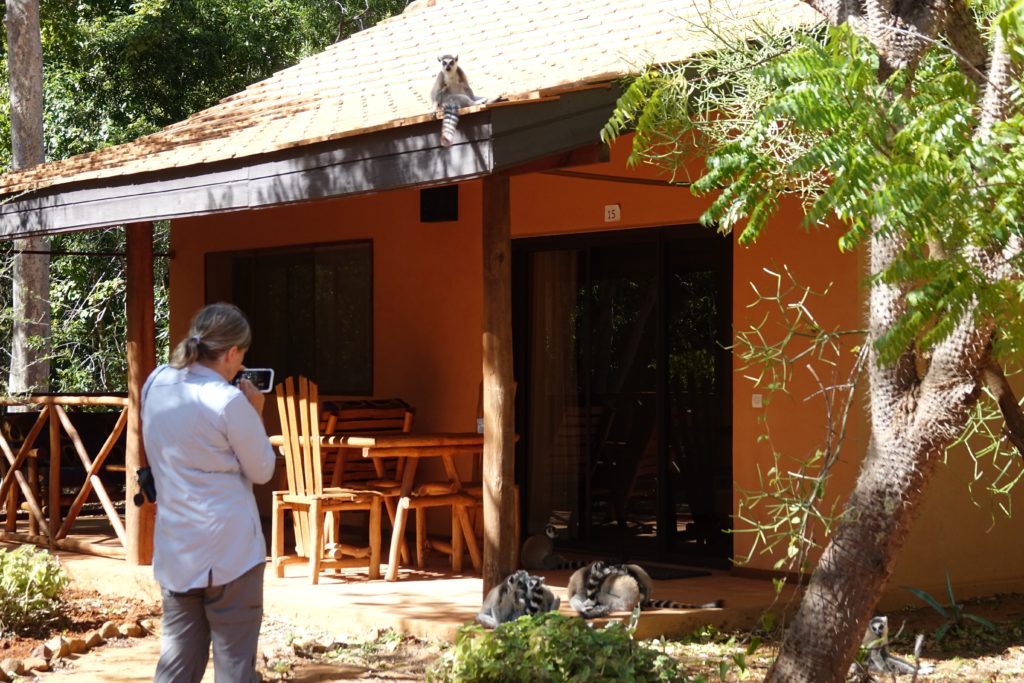
 In the afternoon, in the unique and amazing spiny forest (which is basically a spiny bush), we saw the most famous, bizarre trees of Madagascar, the baobabs. Many of them live for hundreds of years. The oldest – our guide pointed out – has been standing in its spot for more than 600 years. These trees are also called upside-down trees because of their look. It seems like their roots are on top.
In the afternoon, in the unique and amazing spiny forest (which is basically a spiny bush), we saw the most famous, bizarre trees of Madagascar, the baobabs. Many of them live for hundreds of years. The oldest – our guide pointed out – has been standing in its spot for more than 600 years. These trees are also called upside-down trees because of their look. It seems like their roots are on top.
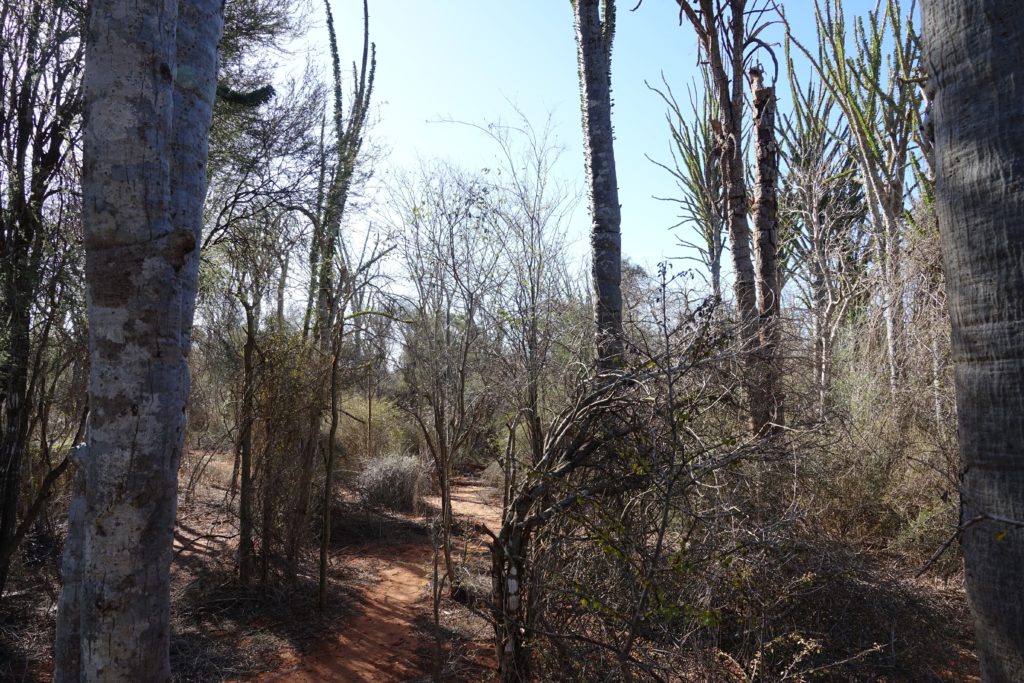
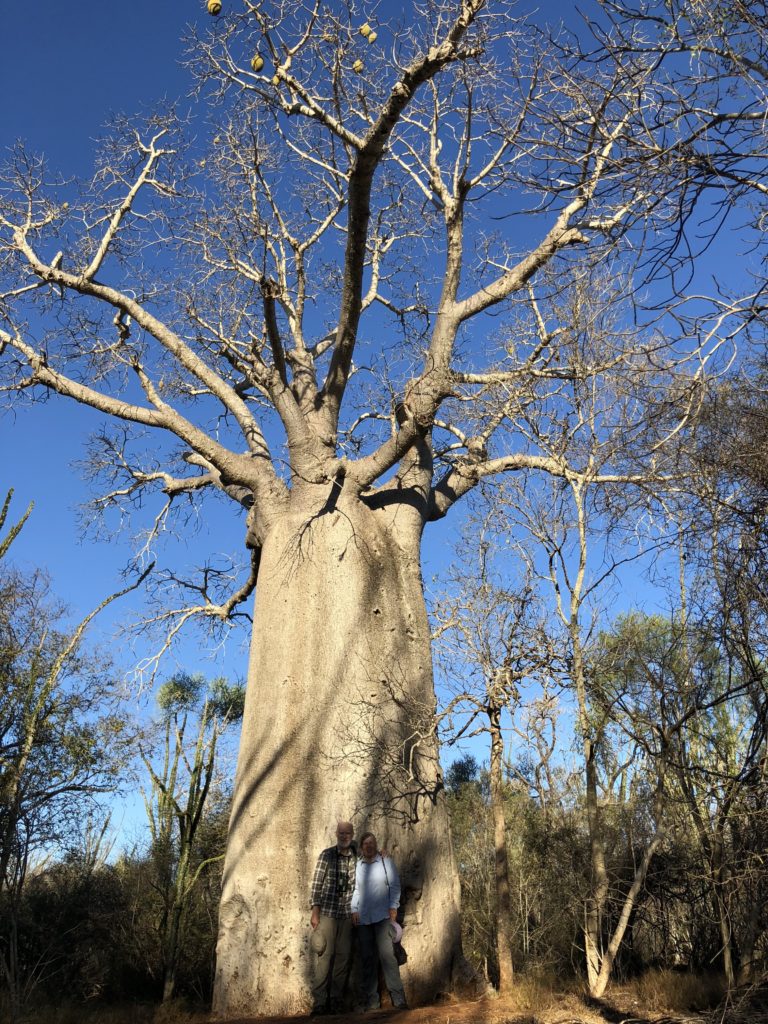
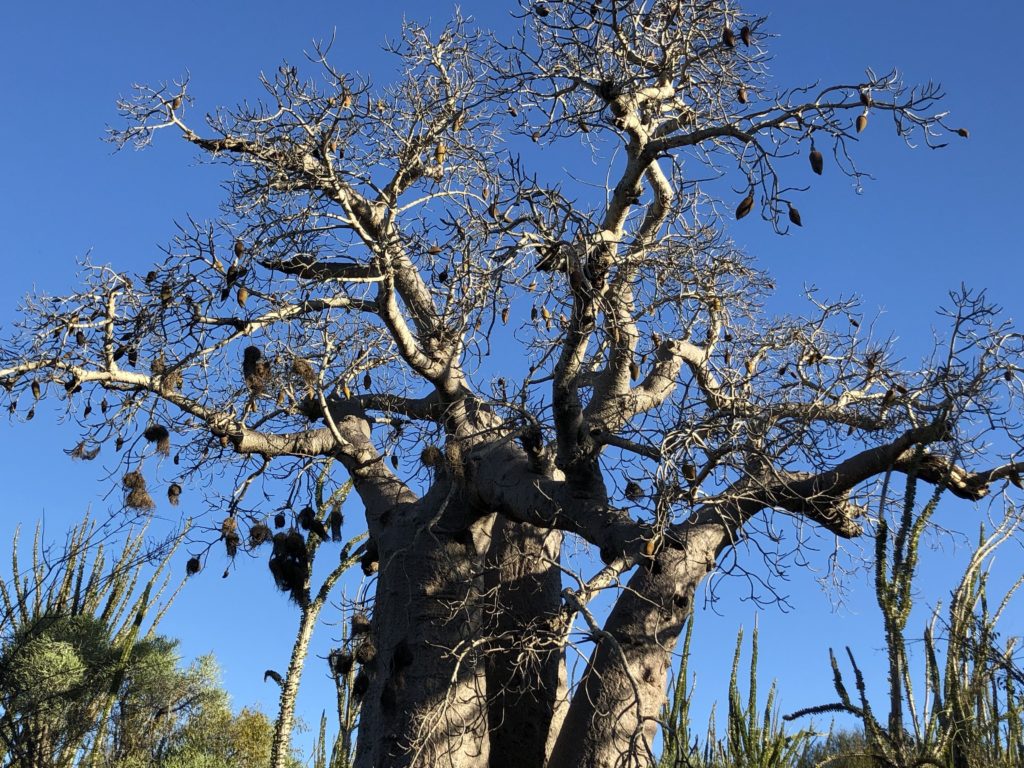 Besides the baobabs there were the unusual, endemic, spiky octopus trees. The octopus trees – which are really succulents – are also called compass trees because their top always points southwards. They can orient those who get lost in the forest. And of course, there were lemurs here too.
Besides the baobabs there were the unusual, endemic, spiky octopus trees. The octopus trees – which are really succulents – are also called compass trees because their top always points southwards. They can orient those who get lost in the forest. And of course, there were lemurs here too.
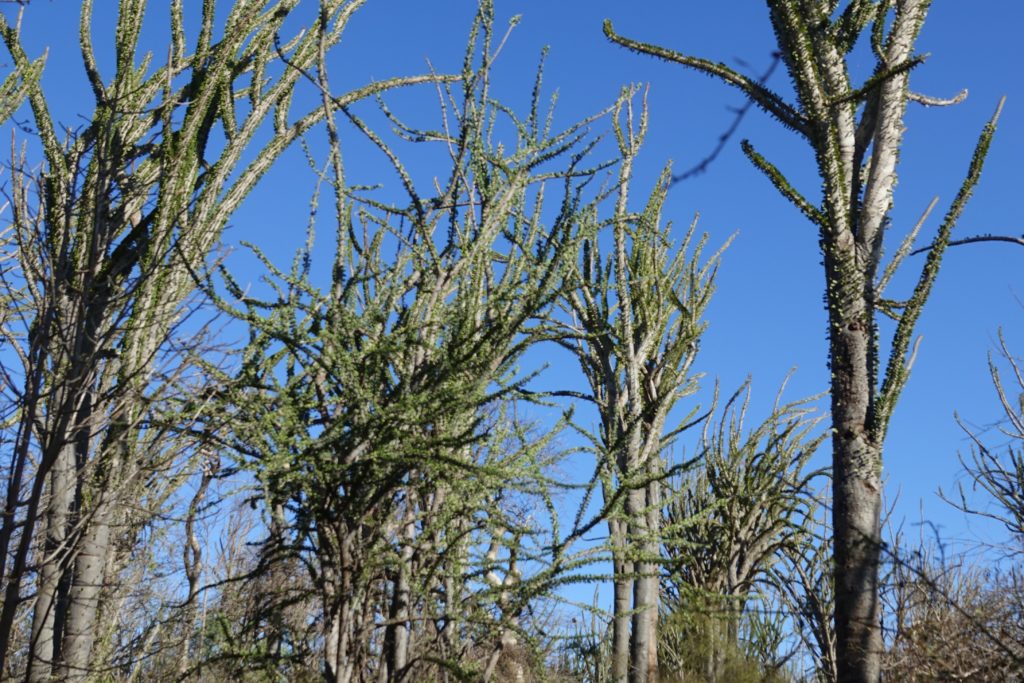

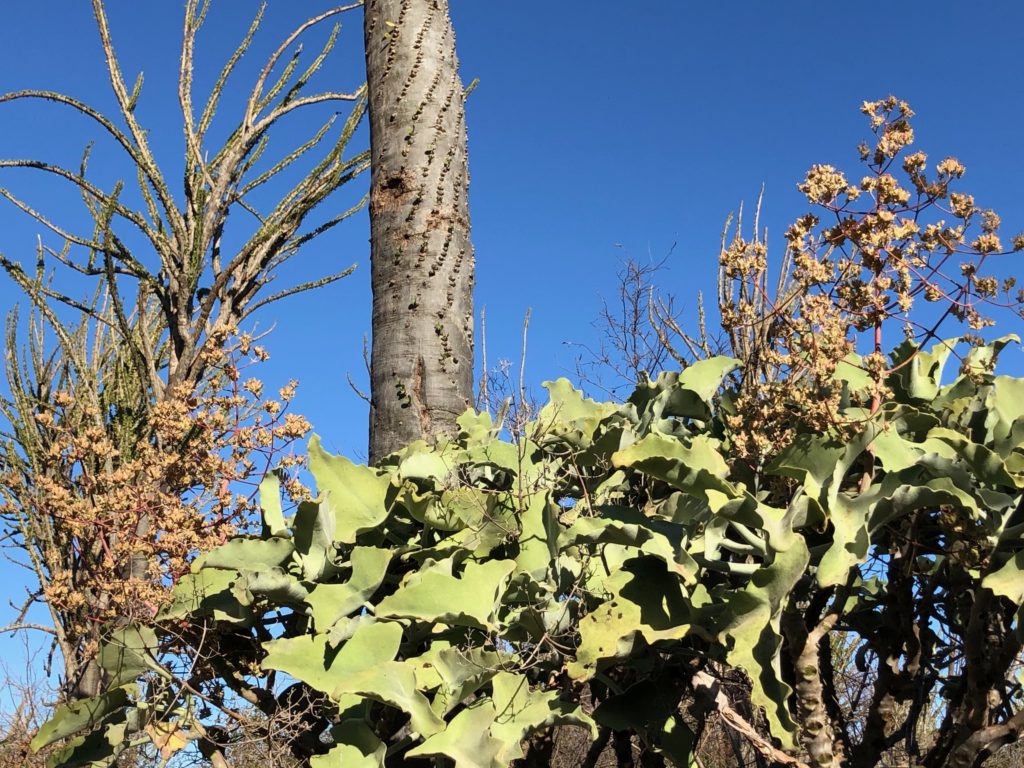
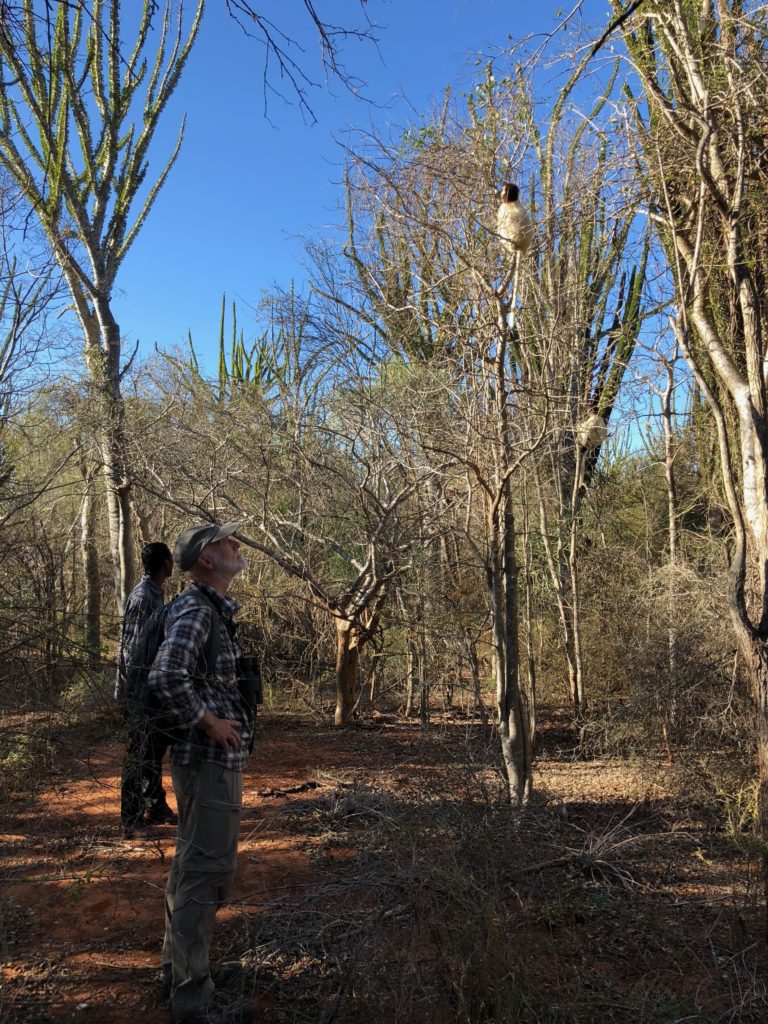
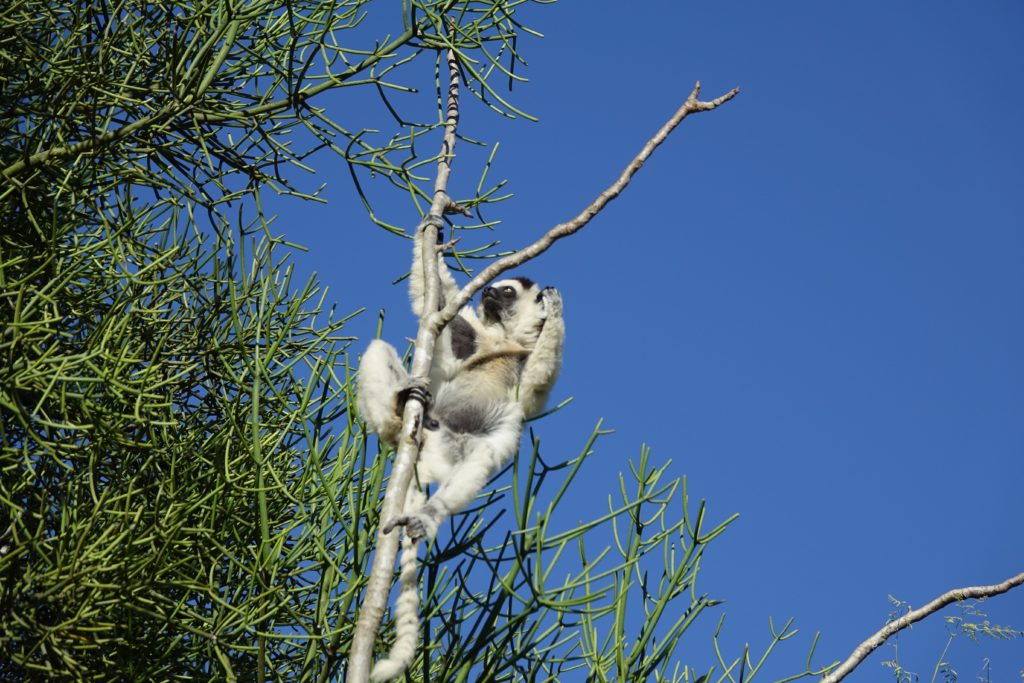 We met a member of the Antandroy tribe (“people of the thorn bush”) in the forest who’s job was to walk around and make sure nobody does any harm to the plants and animals. The forest for the tribe is sacred for the tribe; they themselves want to protect it. He spotted for us the scops owl and the nocturnal sportive lemur – he knew exactly where the lemur was hiding during the day. We were very much impressed!
We met a member of the Antandroy tribe (“people of the thorn bush”) in the forest who’s job was to walk around and make sure nobody does any harm to the plants and animals. The forest for the tribe is sacred for the tribe; they themselves want to protect it. He spotted for us the scops owl and the nocturnal sportive lemur – he knew exactly where the lemur was hiding during the day. We were very much impressed!
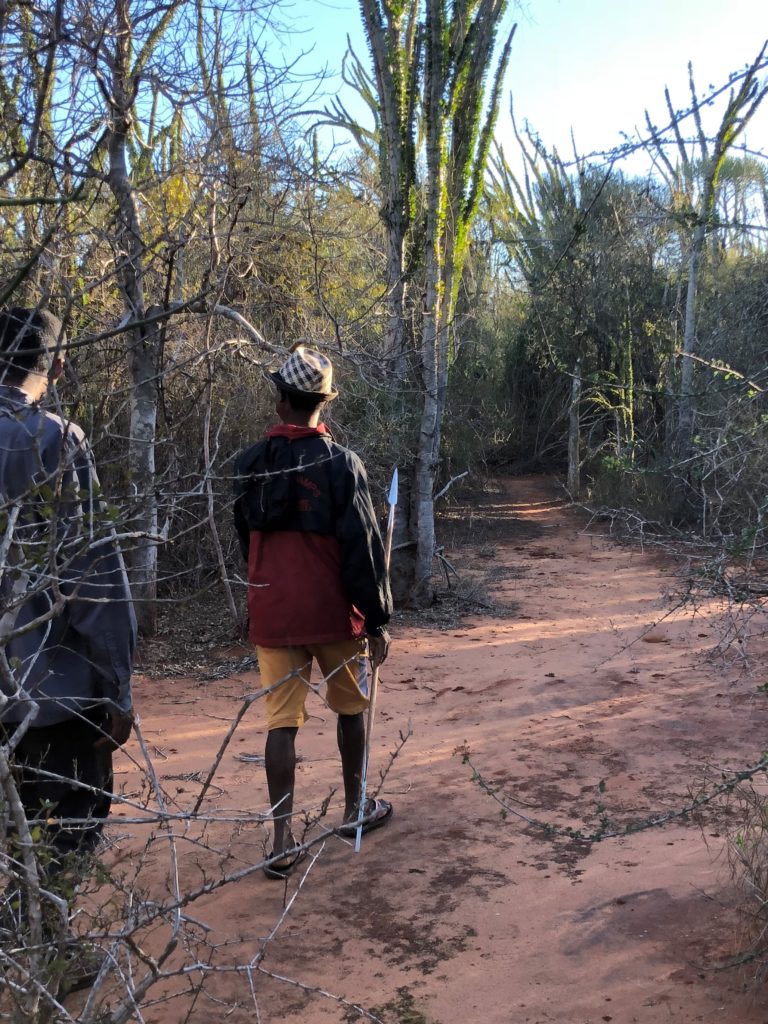
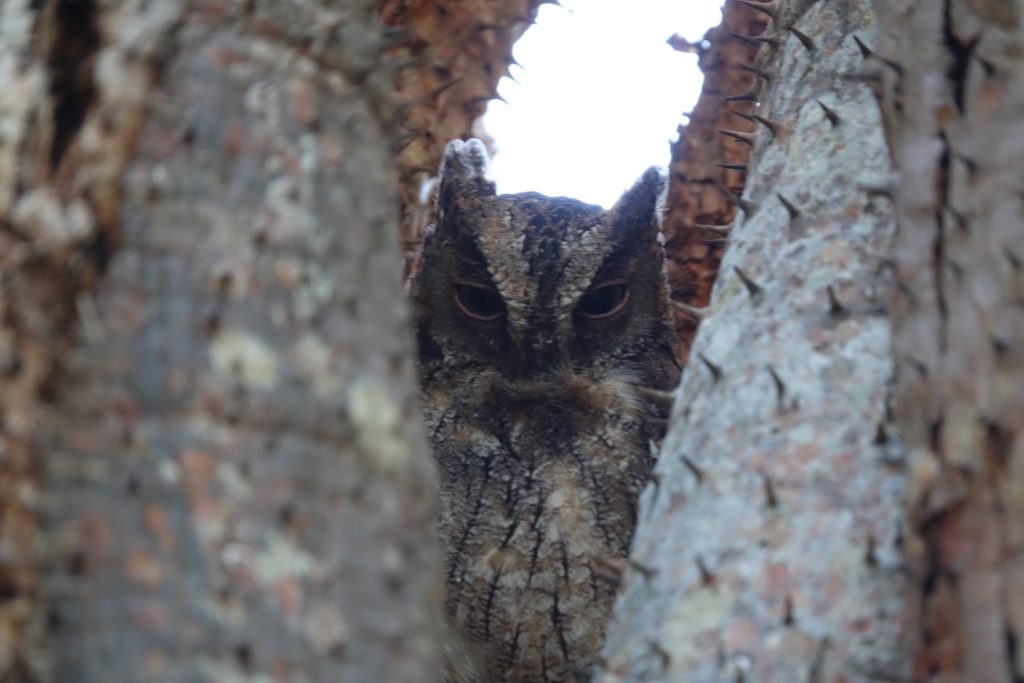
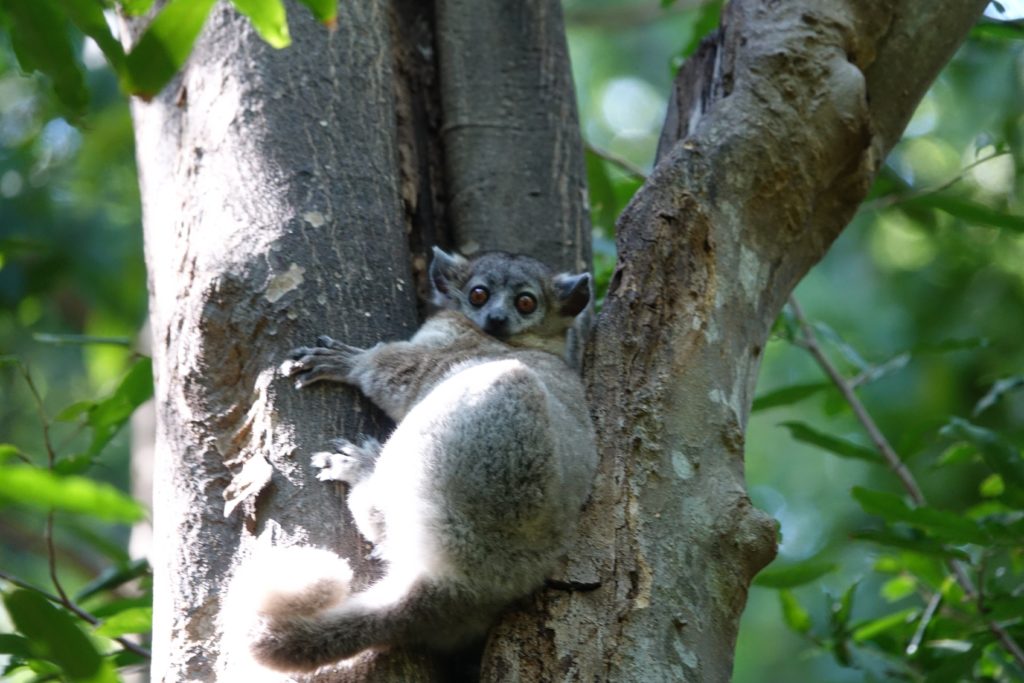 Later that afternoon, we learned about the tribe’s culture and the history of the region in the local ethnological museum where we could see a re-constructed village. These people live very naturally and many of their customs are linked to their respect for their ancestors. When a man dies, they slaughter a zebu and serve the food cooked from the animal to the people who come to pay their respects. The man’s wealth and status are reflected in the number of zebu sacrificed. They place the horns from the zebu on the tomb to please the ancestors and to show everyone the man’s status. The zebu also plays a big role in arranging marriages.
Later that afternoon, we learned about the tribe’s culture and the history of the region in the local ethnological museum where we could see a re-constructed village. These people live very naturally and many of their customs are linked to their respect for their ancestors. When a man dies, they slaughter a zebu and serve the food cooked from the animal to the people who come to pay their respects. The man’s wealth and status are reflected in the number of zebu sacrificed. They place the horns from the zebu on the tomb to please the ancestors and to show everyone the man’s status. The zebu also plays a big role in arranging marriages.
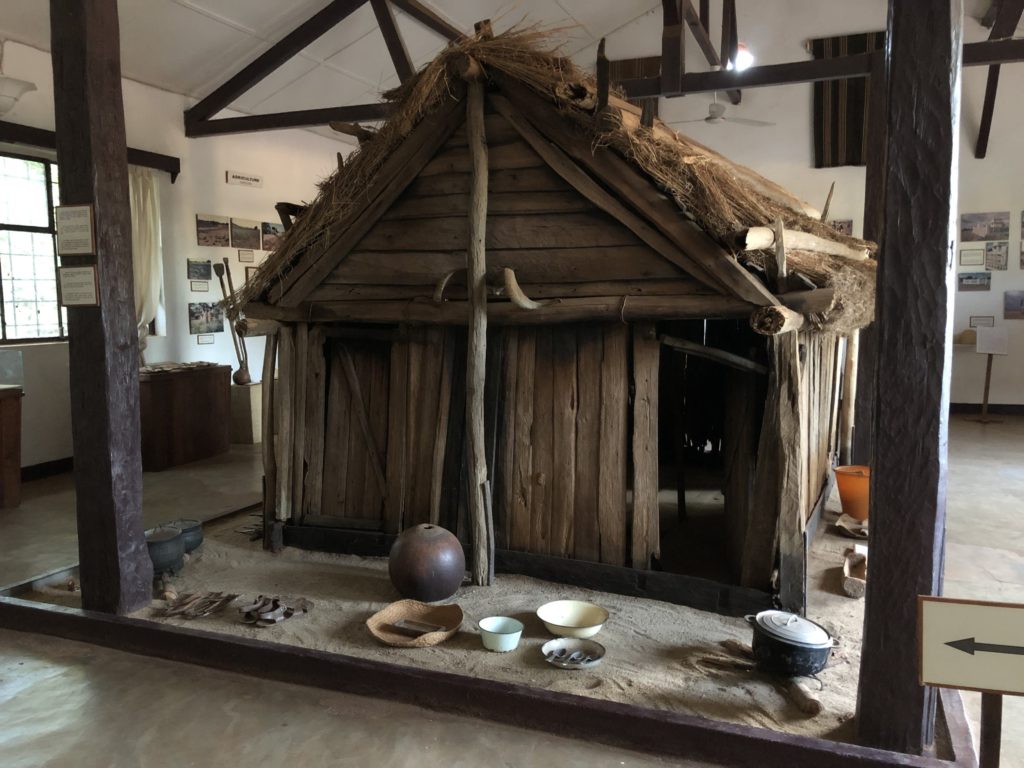 The road to the museum went next to a big sisal plantation. Sisal became a major source of income in this part of the country. The downside of this is that many native trees were cut down to make room for these plants.
The road to the museum went next to a big sisal plantation. Sisal became a major source of income in this part of the country. The downside of this is that many native trees were cut down to make room for these plants.
 Just after dark (before dinner), we went for our first night walk in the spiny forest. The spooky moonlight, in combination with the light from our headlamps, aided us in our search for nocturnal lemurs. The secret is to scan the trees with the headlamps hoping to catch a reflection of the light in the eyes of the lemur. We spotted mouse lemurs and another sportive lemur on this unpredictable walk.
Just after dark (before dinner), we went for our first night walk in the spiny forest. The spooky moonlight, in combination with the light from our headlamps, aided us in our search for nocturnal lemurs. The secret is to scan the trees with the headlamps hoping to catch a reflection of the light in the eyes of the lemur. We spotted mouse lemurs and another sportive lemur on this unpredictable walk.
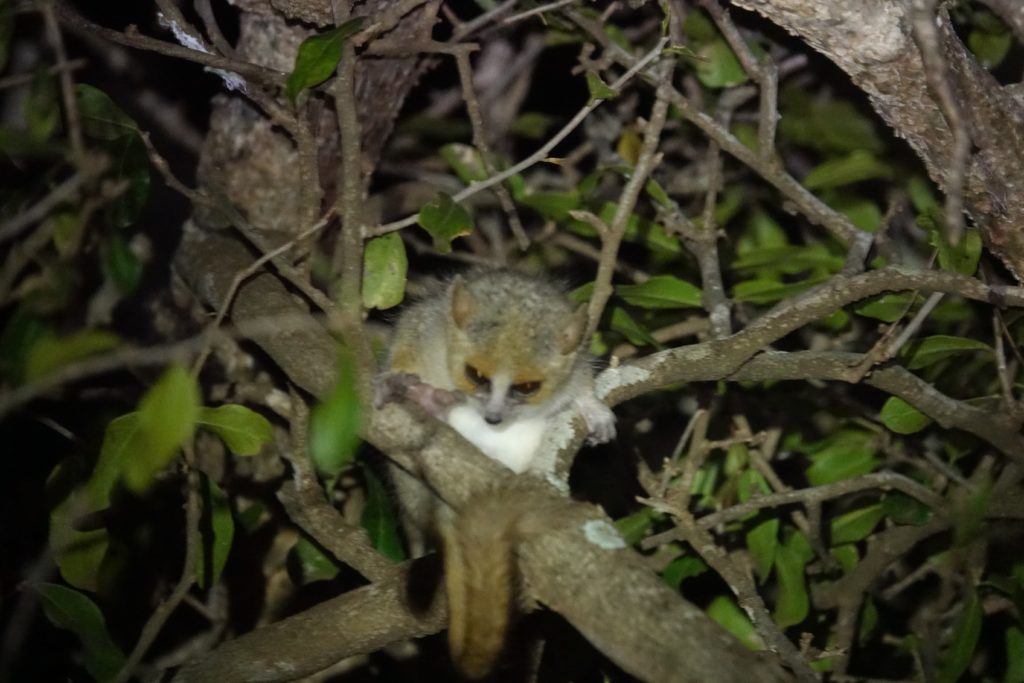
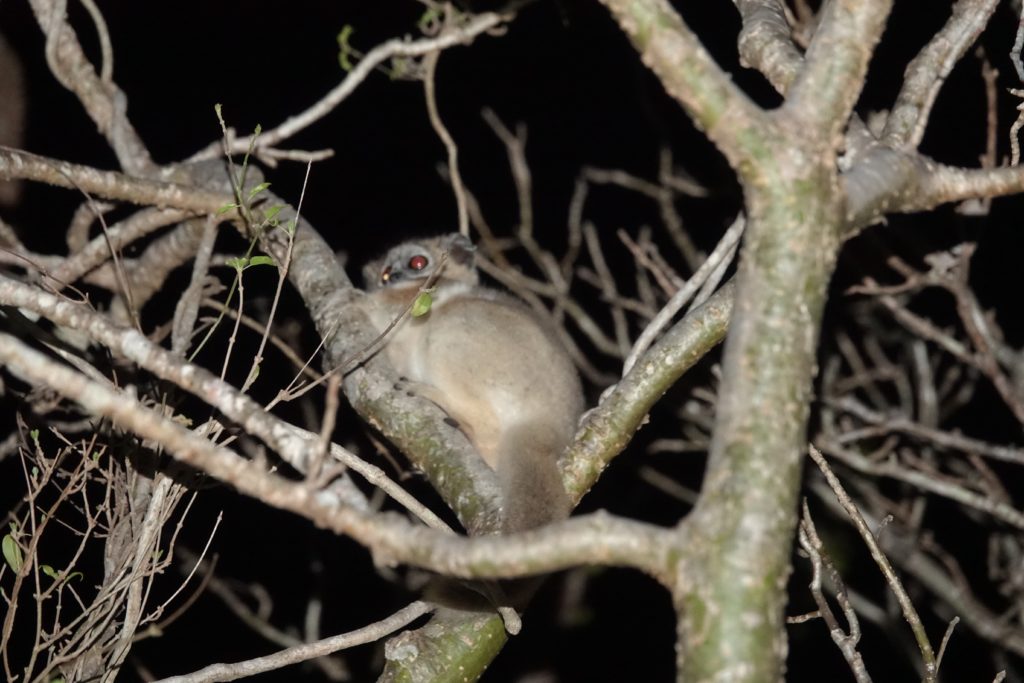 Even though Berenty is one of the most popular tourist destinations on Madagascar, there were only a few others around when we were visiting. We felt very special – almost like the place and the lemurs were there for us alone.
Even though Berenty is one of the most popular tourist destinations on Madagascar, there were only a few others around when we were visiting. We felt very special – almost like the place and the lemurs were there for us alone.
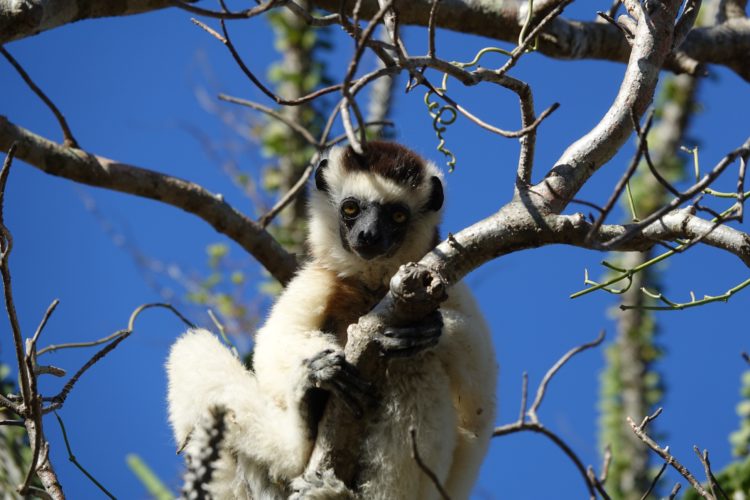
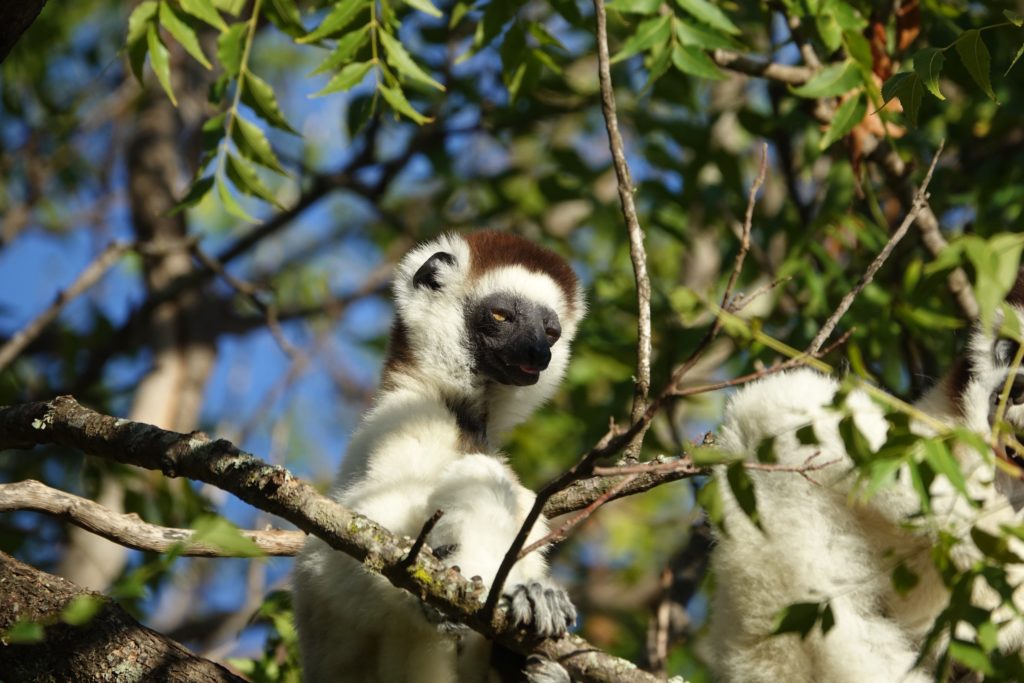





Márta, great pictures and what a unique experience you had at Berenty.